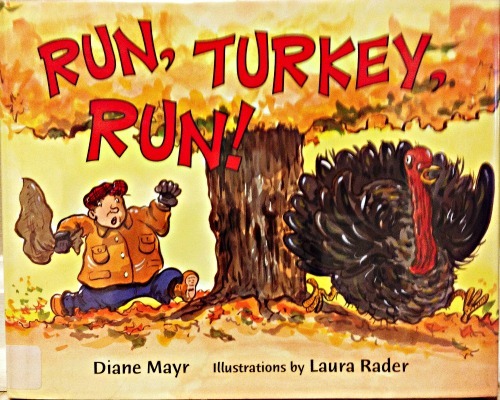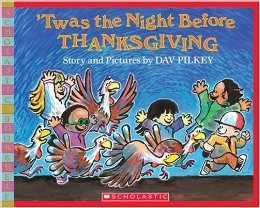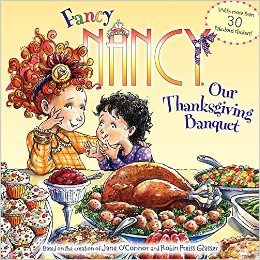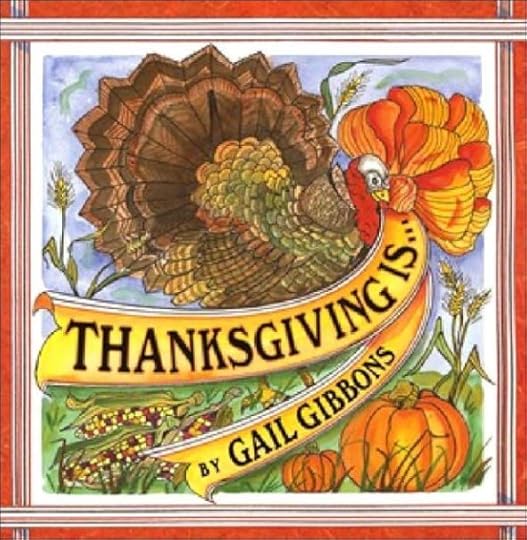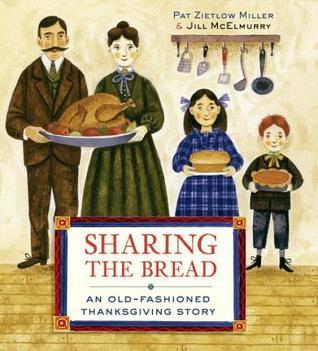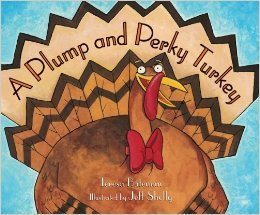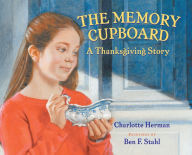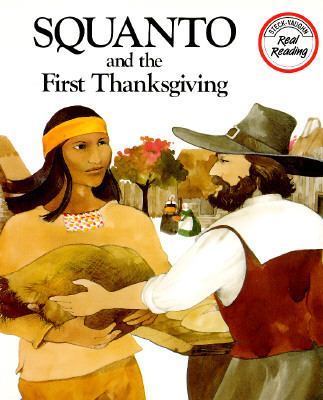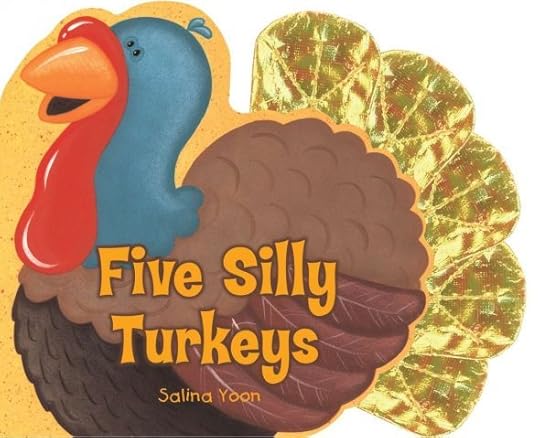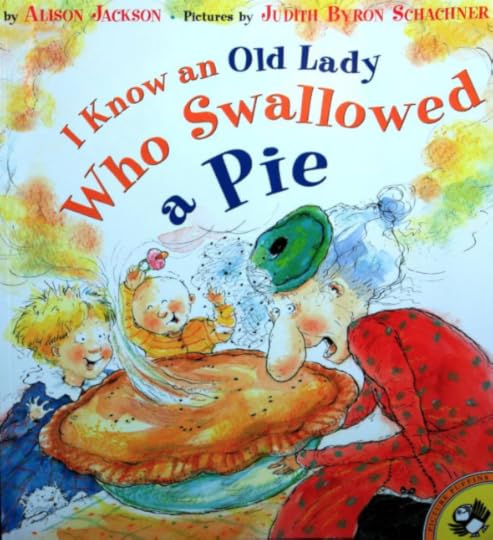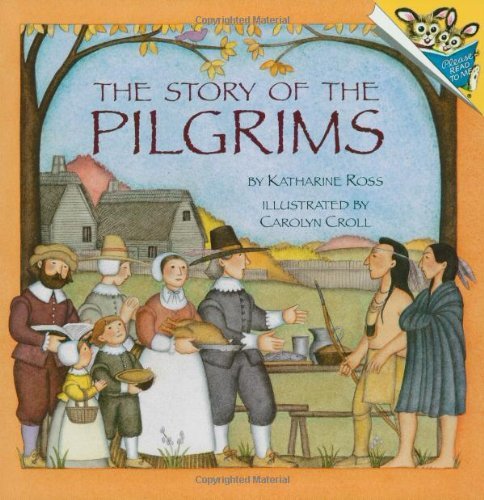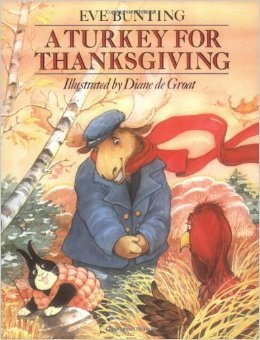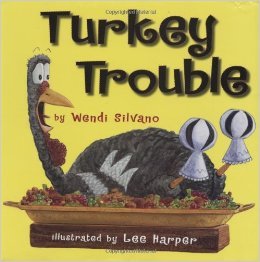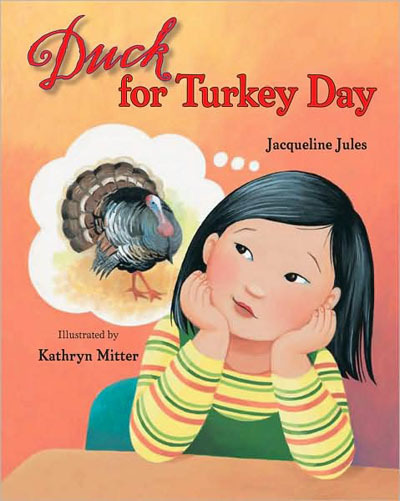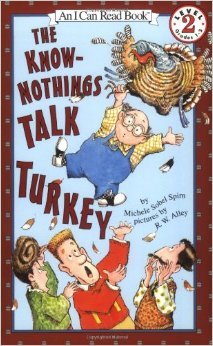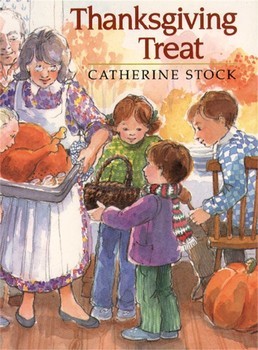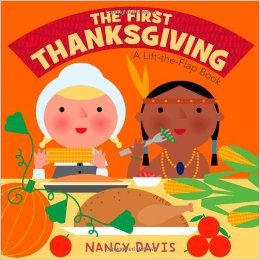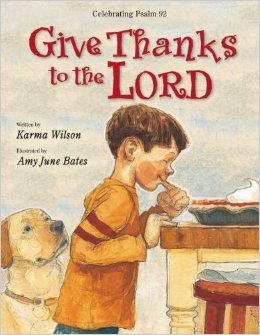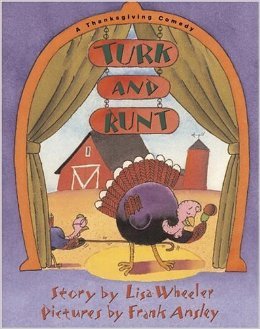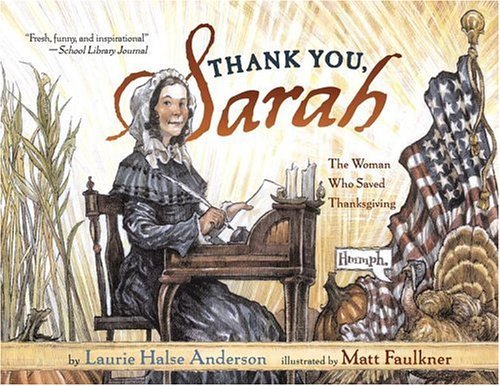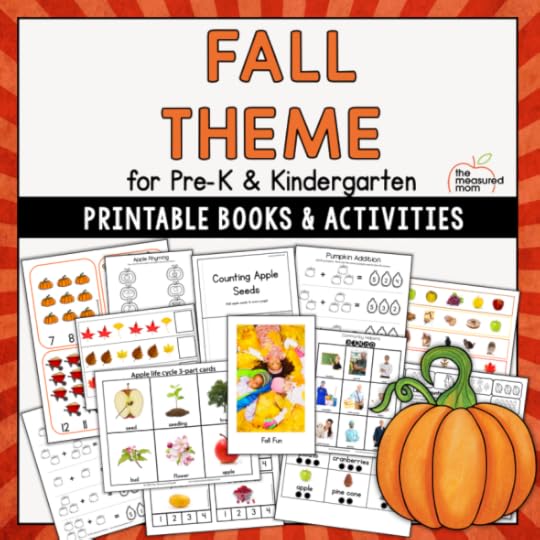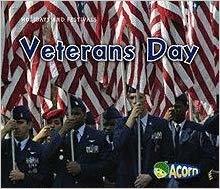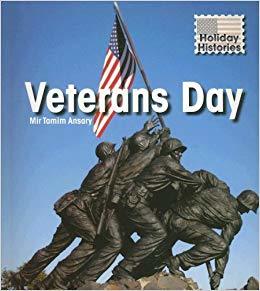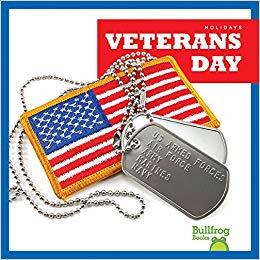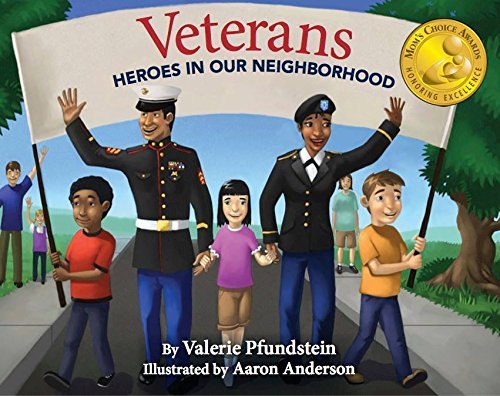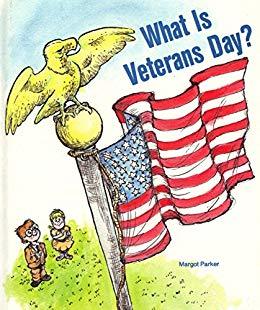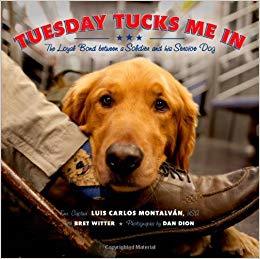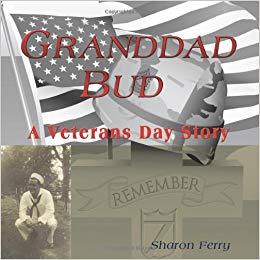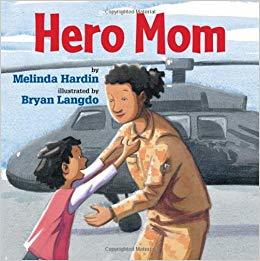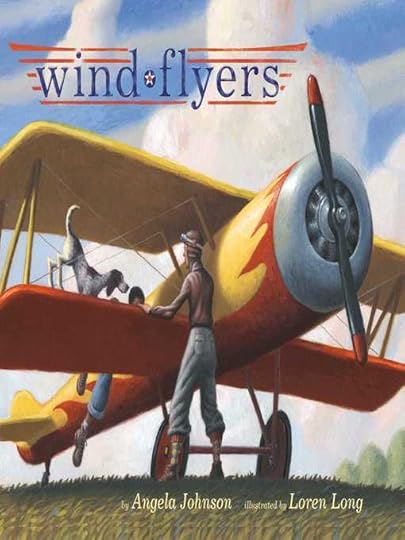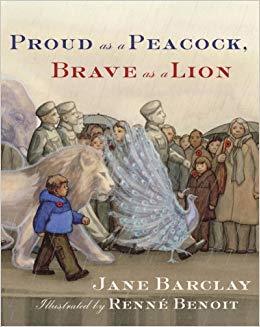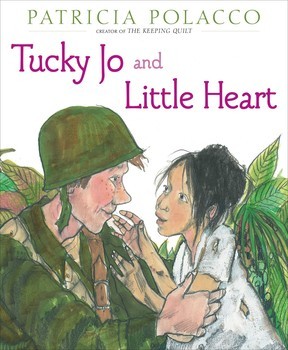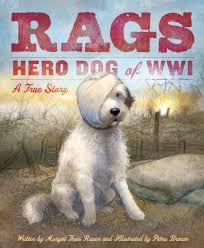Anna Geiger's Blog, page 30
December 13, 2020
How to keep the rest of the class writing while you confer
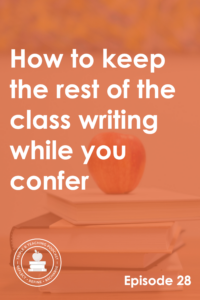
TRT Podcast#28: How to keep the rest of the class writing while you confer
Do your students constantly interrupt you during writing conferences? Get five tips for helping your class be independent while you give one-on-one conferences.
Discover the value of butterfly conferences.
Learn to set boundaries (and stick to them!).
Learn a fun, interactive way to teach kids to solve their own writing challenges.
Listen to the episode here
Full episode transcript
Transcript
Download
New Tab
"Is it an emergency? I'm having a writing conference right now. No. You're interrupting. You need to go back to your desk. Well, you need to figure it out. No, I'm giving a conference!"
Does this sound familiar? You know how valuable writing conferences are, and you're trying to give them to your students, but you're constantly being interrupted. I've totally been there. That's why this episode is going to give you five tips to help you keep the rest of the class writing while you give writing conferences.
You're listening to episode 28: How to keep the class writing while you give writing conferences.
We talked about writing conferences way back in episode five, where I shared five secrets to strong writing conferences. Just for you, I'm going to recap those really quickly. I talked about how you need to listen first, then decide what you're going to teach in your conferences. We talked about teaching the writer, not the writing. So in other words, you're trying to help the writer improve, you're not trying to perfect a piece of writing. You need to be prepared with all your conferring supplies. You need to set up a system you can manage, and you need to just get started. In that episode, I went into a lot of detail about each of these secrets and how to become a powerhouse at giving writing conferences. But one thing I didn't talk about is what to do with the rest of your class.
If you're constantly being interrupted while the rest of the class is supposed to be doing independent writing, it doesn't matter if you have those five secrets down, you're not going to get very far. Your frustration level is going to climb and climb and climb until you want to give up on conferences altogether. We don't want this to happen because conferences have an incredible impact on the quality of your students' writing. How though do you keep the rest of the class writing while you confer? Well, let's get started with the five tips I'm going to share.
Number one: begin your year with butterfly conferences. Maybe you've heard that before. That's what a lot of kindergarten teachers call their conferences where they just kind of float around, stop at a desk, give a few tips, stand up, go to another desk. Like a butterfly you just fly somewhere for a little bit, hop down just for a couple seconds, and keep moving on. Whereas traditional writing conferences are five to seven minutes long. We want to move to those longer conferences, especially if you teach first, second, or third grade. However, I wouldn't start with them right away. You want to make sure that everybody else is comfortable and confident writing on their own while you are engaged for five to ten minutes and simply not reachable. So get started with butterfly conferences, and save the longer conferences for at least a month into the school year.
Number two: set boundaries and stick to them. I've heard many teachers tell their students, you may only interrupt me if it's one of the three B's: blood, barfing, or bathroom emergency. Of course for the bathroom emergency one, they wouldn't even have to talk to you. They could just give you a little signal and you could nod your head. When I was in grade school, I remember our teacher telling us that they didn't want us to interrupt them unless someone was bleeding, throwing up, or an elephant was walking into the classroom. If one of those things was not happening, we were not to interrupt them. Now that was because I was in a multigrade classroom. Actually, crazy enough, it was all eight grades in one room, so the teacher could not have us interrupting all the time when they were teaching other grades. And that worked, obviously, because I remember it lots of years later. So you need to figure out what is going to be the reason that your students can actually interrupt you. The hard part though, is sticking to it!
I wish I could say I'm always great at sticking to the things I promise. Not always. I'll give you a little bit of an example here. This isn't writing related, but I'll get to the connection soon, I promise. So the other day we were driving to school and all my kids were going to be recorded for a Christmas service. Now, we're in the age of COVID, so they can't have a regular Christmas service, but they were all going to go in the gym by class and someone was going to record them saying the recitation. They had to wear nice clothes, church clothes, even though it was only going to be for five minutes out of the whole school day. So I told my boys, "I want you to bring extra clothes to change into so you're not wearing your brand new khaki church pants outside at recess. I don't want stains on your new pants."
They all said, "Oh no, I'm not going to get stains on them! I'm just going to wear the church clothes all day long."
And I said to myself, "Yeah, right. They're going to get stains on their church pants." So I said to them, "No, I want you to bring extra clothes."
They said, "Mom, we're not going to get stains on them!"
So I said, "Okay, that's fine. You can wear your church pants all day if you want, but if you get a visible, noticeable, stain on them, you will have to use your own money to replace them."
My oldest who is thirteen and in eighth grade, was sitting in the back and she said, "Mom, whenever you promise these big consequences, you don't follow through on them."
And I said, "Well I'm going to this time!"
Unfortunately, she had a point. I do tend to make these big promises and then not follow through, but the good thing is I didn't have to worry about it. All the boys came back with khaki pants without stains that I could notice, and it all worked out.
The point of the story is that you have GOT to make sure that you're going to follow through. If someone tells you they need help spelling a word, you're not going to make an exception and write it on a sticky note for them. If the stapler is jammed, you're not going to take a break from a conference to unjam the stapler. You are going to stick to your rules, which are that they may not interrupt you except for emergencies. You are not going to interrupt your conference to handle these other problems.
Tip number three is to model what to do when you're stuck. This, I think, is very powerful and it would be a good mini lesson. You could have a mini lesson about how to be an independent writer. For example, you could sit in front of the room in a student desk, you could put on a ball cap, you could make yourself look like a kid, just to make it funny. You could pretend to be writing and get stuck - just like your students do. I recommend talking out loud about what you're doing. You could pretend to be writing and you could write, "I went to the museu-... I don't know how to spell museum. I know! I'm going to go ask Mrs. Geiger because she's right over there giving a conference!"
Then you would want to help your students react with you as you're doing this little modeling session. They can shout back, "No! No! Don't go!" That could be what they say over and over, "No! No! Don't go!" anytime you're tempted to go interrupt the teacher.
Then you could talk back to them and say, "Well, I don't know what to do, I can't spell this word. I'm stuck!" Then your students could offer suggestions - all the things that you've taught them to do when they can't spell a word.
Another example would be that you're having trouble with supplies at the writing center. So maybe you've written a story and you're going to add more paper to the booklet, but the stapler is broken. You say, "Oh, I'll just go ask Mrs. Geiger really quick. She won't mind."
And then the kids can say, "No! No! Don't go!" and you could talk about what to do instead. For example, you could just grab that extra paper. Then at the end of the conference, you can get help with the stapler, or at the end of Writing Workshop you can get help with the stapler. What you don't want to do is teach your students that every time they have a problem, they go to a particular student who is going to help them. That just creates a new level of dependence, and it's not fair to that student. So make sure that you're teaching them to solve problems on their own.
Tip number four is to do butterfly conferences between your longer ones. So if your longer conferences are five to seven, or ten minutes long, make sure that before you move to the next one, you've built in some time to float around the room and give a little assistance as needed.
Now, some of your students will want to try to suck you into having a full conference with them, even though they maybe had a full conference the day before. You don't want to do that, but you do want to be available just to help solve quick problems, or direct students to how to solve their own problems.
And finally, tip number five is to create class anchor charts that students can refer to when they're stuck. For example, a chart that says "When I don't know how to spell a word I can..." or "When I think I'm done, I can..." or "When I start a new piece, I will..." You're going to create those with your students, with the strategies you've taught them during a mini lesson, and then you'll post those and you're going to practice using those charts. For example, when you were modeling what to do when you're stuck and you pretended to be a student, you could look at those charts and figure out how to solve your own problem using the things that you've already been taught.
So let's take a quick recap at the five things you can do to keep the rest of your class writing while you give writing conferences. The first one was to start the year with butterfly conferences, and ease your way into the longer ones, maybe a month into the school year. Number two, set boundaries about when they can interrupt you and stick to them. Number three, model what to do when stuck while writing. You could pretend to be a student in the front of the room and make this an interactive experience where your students tell you what to do when you're not sure. Number four was to do butterfly conferences between your longer ones - build in that little time so you can float around the room and give short assistance before you move into a longer conference. Finally, create class anchor charts that students can refer to when they're stuck during their independent writing time.
I hope these tips help you give more focused conferences because the rest of your class is writing and busy. Next week, we're going to conclude this eight part writing series. We're going to talk about how to meet EVERY child's needs during Writing Workshop time. So stay tuned for that, I'll talk to you next week.
Scroll back to top
Sign up to receive email updates
Enter your name and email address below and I'll send you periodic updates about the podcast.
powered by
Links & resources
Episode 7: 5 secrets to strong writing conferences
Teaching Every Writer, my full online course
The post How to keep the rest of the class writing while you confer appeared first on The Measured Mom.
December 6, 2020
What to do when your writers WON’T REVISE
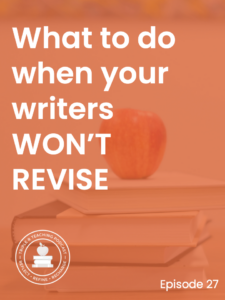
TRT Podcast#27: What to do when your writers WON’T REVISE
Have you ever asked your students to revise their writing and heard something like this, “But I like it the way it is! I like what I wrote the first time!”
We need to help our students see that revision isn’t about fixing bad writing; it’s about making good writing��even better!
In this episode you will:
Learn how to help your students revise as they write (not just when they’re “finished”)
Discover the four types of revision that even our youngest writers can do
Learn age-appropriate revision strategies
Listen to the episode here
Full episode transcript
Transcript
Download
New Tab
Have you ever tried to get your learners to revise their writing and heard something like this? "But I like it the way it is! Why do I have to change it? I like what I wrote the first time!"
Our students often think of revision as punishment. They assume we ask them to revise because their writing isn't good enough. Let's help our students see revision isn't about fixing mistakes, it's about seeing what's possible. Stay tuned for Episode 27: What to do when your students won't revise.
Before we get into the meat of this episode, let's talk about the difference between revising and editing, because I find that a lot of teachers and students mix these up. Revising is about making changes to the content of a piece, while editing brings attention to grammar, spelling, word usage, punctuation, and other conventions of writing. So revising improves the QUALITY of the writing by improving the content, organization, and word choice.
These acronyms may be helpful. You've probably heard these before, ARMS and CUPS. Revising is about "A-R-M-S". "A" - add words, "R" - remove words, "M" - move words, and "S" - substitute words. Whereas editing is about "C-U-P-S". "C" - capital letters, "U" - use of words, "P" - punctuation, and "S" - spelling.
Now that we've talked about the difference between revising and editing, let's talk about WHY our students often don't want to revise. They think that our asking them to revise their piece means they failed. They think revising is all about fixing mistakes instead of taking something good and making it better! Here's a quote from Georgia Heard, in her book, "The Revision Toolbox". I recommend taking this quote and posting it for your students. "Writers revise because they feel committed to making a piece of writing the best they can because it means something to them. It matters enough to try to make it their best."
I would say the single most important thing you can do to help your students be willing to revise is to show them that revision doesn't just happen at the end. We're revising all the time! Think about the last time you composed an important email to someone. You probably didn't write it straight through from beginning to end and then go back and change things. As you were writing you might've thought, "Oh, I don't like that sentence. I'm going to change it." Or, "Oh, I know I need to go back to this paragraph and add something." That is completely normal. That's what revising is all about! It's going back to our piece as we're writing it and changing it whenever we see something that we'd like to improve.
I think so often, especially back when I was in grade school eons ago, the teachers would have this linear chart that showed the stages of the writing process: pre-writing, drafting, revising, editing, publishing. We need to remember that writing is not linear. The writing process is not linear, it's recursive. That's actually from a book by Ralph Fletcher. I can't remember the title. I think it's "Writing Workshop Essentials", but I'll link to that in the show notes. His point is that, when you think about the writing process, you're moving in a circle and you're going back and forth on the circle, you're not just going in a straight line.
You can show your students that revising happens all the time by the writing that you do in front of them. Show them that you often stop, backtrack, change something, and so on as you're writing. You don't wait until the last second right before you're going to check all the spelling.
Another tip for you is to make sure you save revision for the writing your students care about. Oftentimes in a really good Writing Workshop, kids are producing lots of different content. Some of it is good, and some of it is not good. The same is true for us, right? If you do any kind of writing, some of it is probably great and some of it isn't. Any professional writer will tell you the same thing! We don't want them to take a piece they don't care about that has one or two sentences and then they abandoned it because they didn't like the topic. We don't want them to go back to THAT piece and say, "Let's make this really good."
We want to help them see what piece they're already proud of, and then talk about how you can make it better. When your students are revising, remember your goal. Your goal is NOT to make this one piece of writing perfect, it's to help them learn a strategy they can use on writing in the future. So, be sure to teach revision strategies that students can apply to other projects. That may be as simple as helping them understand that revision takes different forms. We talked about "A-R-M-S". Revision can be adding words, removing words, moving words, and substituting or changing words.
You'll need to be very patient because, especially if you're teaching K-2, they're never going to revise as much as you'd like. They just won't. For very young kids, honestly, revising might just be adding detail to a picture. So we may have to rethink how we see revision, but just remember it's having them change something to make their writing better.
I find it is EXTREMELY helpful to have students get in the practice of reading their writing out loud, even if it's pictures, right? So if it's a story in all pictures, they can talk out loud about what's in their story. This is one of the MOST important things I can think of.
Just the other night I was sitting down with my fifth grader and we were looking at the final draft of his story that he was about to turn in for English class. Actually, the story was quite well-written. It was a little bit of a bizarre plot line, which is often true with fifth grade boys. It was about a detective named Mr. Potato, who destroyed a villain by shooting french fries at him. So, it was pretty crazy, but it did have a problem and solution, a lot of great vocabulary, and a pretty good plot. However, as we read the story out loud, he often heard things that he would have noticed if he'd already done that.
Definitely make this a routine. Have your students start Writing Workshop every day by covering their ears. I call these magic headphones, because when you cover your ears you can hear what you're saying really loud, but you can't hear the people around you. And you can also read it softly because it's really loud in your head. So have them read their writing out loud before they continue, and show them how reading it out loud often means you catch something that you can change!
Another tip, when they revise, please teach your students NOT to erase. Have them cross things out with a pencil. The reason for this is that it gives you a record of the revising that they've done. If they erase it, when they want to change something you have no idea that they changed a blah word to a more exciting word. Or maybe you can tell, but you don't know what the blah word was. It's so good for our students to see for themselves the changes they've made!
When they are publishing it, they can recopy it. If you've got very young children, you may want to rethink how you have them publish. Maybe you type it for them. Perhaps by the time they publish, you have them erase and rewrite. But the point is, you want to see the changes they've made. You don't want them to erase all the evidence of the wonderful writing work that they've done.
Another tip for you in terms of helping your students be more willing to revise, is to make sure that the strategies you're teaching are appropriate for their grade level. It can be easy to get carried away with all the wonderful things they can do to revise and expect them to do something that's really not developmentally appropriate. So in kindergarten, our students aren't going to revise much at all. It may be as simple as adding a detail to a picture, or writing just one more sentence to give an additional detail. As they gain writing fluency, and it's not so much work to get out a single sentence, we're going to add more strategies to their toolbox.
In first grade, especially, we make sure that they are re-reading their writing with those magic headphones to make sure it says what they want it to. They might add a few words or details, they might add labels to pictures, they might add a title, or they might check to make sure the picture actually matches the story. You could also have them use arrows to move information that could be in different parts of the piece.
I want to give you an example of some revising that my first grader did just recently. She has a wonderful teacher who does Writing Workshop, which I absolutely love, and she was writing the steps of making dill pickles. As she wrote it, she remembered that she had missed a step and she didn't know where to put it. So her teacher showed her how to write it on a piece of paper, cut it out, and tape it above what came after it. She was revising as she wrote. She realized that she missed something, and she had to figure out how to put it back in. Her teacher taught her a strategy for doing that. That's a wonderful example of teaching revising as needed, whenever it comes up.
In second grade, students can do the things they learned in the other grades and more things like adding new ideas, changing the beginning or the ending, taking out details that really don't fit, changing weak verbs to make them into strong verbs, or adding conversation and specific details. But we're not going to be doing all of those at the beginning of second grade, so we'll gradually add more strategies. Then if you have a child like my daughter, who is ready for something a little more advanced, you can certainly teach them new strategies as needed in their individual writing conferences.
So, there you go. Those are some thoughts about revising. The big take-aways I'd love for you to have today are that you want your students to see that revising happens ALL the time not just when you think you're finished with a piece. That writers revise their best writing. So they take the writing they love the most, and they invest time into it to make it even better. We want them to know that there are typically four ways to revise, adding something, removing something, moving something, or substituting something. And we want to remember to teach them age appropriate revision strategies, keeping in mind that we can always teach more advanced strategies on an individual basis.
If you are looking for mini lessons that teach revising, you will find those plus many, many more inside my online course, "Teaching Every Writer". I'm going to link to that in the show notes. You can also learn more about it at teachingeverywriter.com. You'll find the show notes for this episode at themeasuredmom.com/episode 27. Thanks for listening, and I'll talk to you again next week.
Scroll back to top
Sign up to receive email updates
Enter your name and email address below and I'll send you periodic updates about the podcast.
powered by
Links & resources
The Revision Toolbox, by Georgia Heard
How to teach revising and editing in K-2 (video blog post)
Teaching Every Writer, my full online course
The post What to do when your writers WON’T REVISE appeared first on The Measured Mom.
November 29, 2020
How to get your students to write more than one sentence
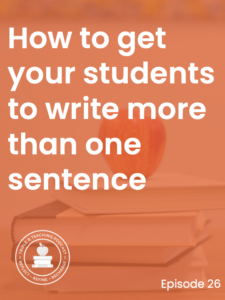 TRT Podcast#26: How to get your students to write more than one sentence
TRT Podcast#26: How to get your students to write more than one sentence“I’m done!” These innocent little words may be the writing teacher’s least favorite. Too often, we hear these words very soon after we’ve begun our class writing time.
We’ll address this common problem in today’s episode.
Learn how starting the year with a different genre can help solve this problem.
Discover how to use oral language to help students develop their ideas.
Fill your toolbox with easy strategies to help students add to their writing!
Listen to the episode here
Full episode transcript
Transcript
Download
New Tab
"I'm done!" These innocent little words may just be the writing teacher's least favorite. That's because too often we hear these words very soon after we've begun our class writing time. What do you do when you have one or likely more students telling you "I'm done", when they've written just one sentence? We're going to address this common problem in today's episode. So stay tuned for Episode 26: How to Get Your Students to Write More Than One Sentence.
"I'm done!" What do you do when your students know they're expected to write for the entire Writing Workshop, but they feel they're finished just a few minutes into it? While they could technically move on to a new piece and work on that until the timer goes off, we want our learners to develop stamina with a single piece of writing. That's why in today's episode, I'm sharing some strategies to get your students to write more than a single sentence.
Before we get started with today's tips, though, I want to be clear about what students we're talking about here. We're not talking about our very youngest writers who worked so hard even to put a single word on the page. For them, a full sentence is something to be proud of! If they have completed that before the Workshop is done, they are certainly welcome to move on to a new piece.
No, we're talking about writers who are able to write one sentence in a few minutes and then they just want to stop. They feel they've said all there is to say, or they know there's more to say, but they want you to hold their hand as they write each and every sentence. These are the writers we're talking about in today's episode.
I posed this question in our "Kindergarten and First Grade Teaching Ideas" Facebook group. I wrote it like this: Do your students ever start writing for Writing Workshop or journal writing time and get stuck after the first sentence? What's your best advice for getting them to write more? How do you get them unstuck? As usual, I received a lot of great, helpful replies because our Facebook groups are amazing because of the amazing educators inside them. Be sure to check the show notes at the end of this episode so you can request to join one of them. I'm going to be pulling from some of those replies in today's episode.
If you run into this issue a lot at the BEGINNING of the year, when students write one sentence and tell you they're done, you might want to consider starting the year with a different genre. Are you starting with a genre that is very accessible to our youngest writers, or does it present more of a challenge? As a teacher, I always started the year with personal narratives, but looking back, I'm not sure that was always the best choice. It might be worth trying a different genre because personal narratives can actually be quite challenging for kids. When you think about it, it does require quite a few sentences to tell a story.
Jackie, one member of our Facebook group, has her students make pattern books. This could be an excellent way to start the year! She models many different pattern books and then asks her students to write them on their own. As she says, the consistency of a known pattern creates confidence that naturally leads to more details.
You might also want to consider starting the year with free verse poetry, which doesn't require complete sentences at all! There are some really good books called "Kids' Poems" from Regie Routman, and I'm going to link to those in the show notes. She has them for different grade levels. They're awesome because not only do they give you ideas for teaching poetry, but they have a whole bunch of kids' sample poems right at that grade level that you can display for your students. Then they can see examples of poetry that are realistic for them.
Something else to consider is to have your students make books, instead of write stories, on a single sheet of paper. This would make a lot of sense if you're doing a pattern book or if you're doing a personal narrative. It automatically lends itself to having a beginning, middle, and end. I go into this in a lot of detail in my online course, Teaching Every Writer, and in a mini course inside my membership, The Measured Mom Plus. I go into a lot of specifics about how to set this up and how to manage it.
The general idea is that you provide a set of blank books with three to five sheets of paper stapled together. We're just talking about blank typing paper, they could have lines on them, but you probably want to start without them, at least at the beginning for kindergarten. You show your students how to write a part of the story on each page. You can tie this in with oral language, so it can help to point to each page and ask them what they're going to write on each page. You could even start the Writing Workshop with having your students turn to a partner and talk about what they're going to write.
This is a nice segue into a very important point, which is that we need to focus on helping our students use oral language to develop their writing ideas! They really need to talk out the writing before they put pencil to paper, especially when they're very young writers, like in kindergarten and first grade. But when you think about it, oral rehearsal is good for adults too! It helps to talk through your writing when you're stuck!
"Literacy floats on a sea of oral language." This lovely quote is from Jocelyn, a member of our Facebook group and she is SO right. That's why many of these tips that follow start with oral language.
If you have a writer who is very capable, but just can't seem to get past the wall of that first sentence, talk about the story first during your writing conference. Sit down and ask them to tell you details about the story. What I like to do is put up one finger with each detail. Then when they're done, I can say, "Look at that! You just gave me three ideas for your story. Let's talk about what those were one more time. Now you can write sentences - one for each idea."
One person in our group, Shan, has her students tell her their story. So let's just say it's one sentence and they read her the sentence. She repeats it back and she asks if that's the WHOLE story. Usually this leads them to realize they have more to say! You shouldn't expect your students to be naturals at this right away. Even though they've been talking for a long time, they're going to need a lot of guided practice in using talk as rehearsal for their writing.
In our group, Jocelyn actually shared a step-by-step method, which I'm going to share with you here. Number one: you display a picture. Number two: you talk about the picture out loud, and then you have your students talk to a partner about the picture. You can call on volunteers to share their ideas - what they talked about in relation to the picture. Then you model how to use their ideas to construct a sentence, but you don't write it down yet, you just say it. Then you have your students help you create another sentence. Again, this is just oral. Finally, you work together to construct the sentence on the board.
This is a wonderful example of modeling and sharing so that you are taking the lead at first and gradually releasing responsibility to your students. These are strategies to start with.
If you have learners that are ready for something more advanced, you can teach them how to anticipate questions the reader might have, and then answer them in their writing. I actually have a blog post all about this, which I'll link to in the show notes.
Another more advanced strategy comes from my colleague, Becky Spence, of "This Reading Mama". She created a chart called "M-O-R-E". Each letter of "M-O-R-E" gives learners an idea for how to add more to the writing. "M" is move on to what happened next. "O" is observe - why did it happen? "R" is relate to the five senses. "E" is emotions - how did you feel about it? She actually has a printable chart with this acronym, and I'm going to, again, link to that in the show notes.
You want to show them how to use the chart to help them think of a second sentence. I would caution against having them work through all those letters in order. That often leads to awkward writing that doesn't make sense, especially when you include the senses, because so often kids just put in something random that isn't even related. Teach them and practice with them using that chart to spark an idea and not necessarily go through the steps in order.
That seemed to go pretty fast, but I hope that it gave you a whole bunch of ideas for helping your students think of more than one sentence in their writing. Let's go ahead and recap: Number one: consider starting the year with a genre that's easier for kids, such as patterned books or free verse poetry. If you're going to start with personal narrative, that's perfectly fine, but I would consider giving them blank books instead of single sheets of paper.
Number two: start with oral language. You're going to show your students how to use talk to rehearse their story before they actually write. We shared a step-by-step method that you could try.
Number three: try more advanced strategies like using the acronym "M-O-R-E" to help them decide what to write next.
Number four: have them anticipate the reader's questions and answer them in their writing.
If you're looking for more actionable strategies that will help you teach writing to your children in kindergarten, first, and second grade, I recommend my online course Teaching Every Writer, which I have created with my colleague, Becky Spence. It really includes everything you need to teach writing well in K-2, including over 200 writing mini lessons! You'll find a link to that in the show notes as well.
You'll find the show notes at themeasuredmom.com/Episode 26. Thanks for listening and I'll talk to you again next week.
Scroll back to top
Sign up to receive email updates
Enter your name and email address below and I'll send you periodic updates about the podcast.
powered by
Links and resources mentioned in this episode
Blog post: How to help students add more to their writing by asking questions
This Reading Mama’s post: How to get kids to write MORE (with a free chart)
Kids’ Poems books by Regie Routman: Kindergarten Poems, First Grade Poems, Second Grade Poems, Third & Fourth Grade Poems
Video training for members: How to get started with writing workshop in K-2
Membership mini-course #2: How to get started with writing workshop in Grades 3+
Check out my full online course!
Teaching Every Writer
The post How to get your students to write more than one sentence appeared first on The Measured Mom.
November 22, 2020
What to do about spelling during writing workshop
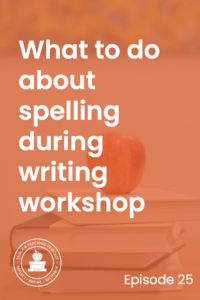
TRT Podcast#25: What to do about spelling during writing workshop
Have you ever had a tail behind you during writing workshop … a long line of students asking for help with spelling? That’s what can happen if we don’t teach our students independence with spelling.
But how does that work when many of them can’t spell most of the words they want to write?
In this episode you will discover:
How to encourage your students to spell according to their ability
How to support students who are afraid to write words they can’t spell
The importance of having high expectations for all our spellers
Listen to the episode here
Full episode transcript
Transcript
Download
New Tab
Have you ever had a tail during Writing Workshop, a long line of students behind you asking for help with spelling? That's what can happen if we don't teach our students independence with spelling. But how does that work when most of them can't spell most of the words they want to write? Well, in today's episode, we're going to be talking about some strategies you can use to help your students develop independence and proficiency with spelling.
You are listening to Episode 25: What to do about spelling during Writing Workshop.
I am a strong proponent of invented spelling. Sometimes we call that phonetic spelling, and it just means that children spell words the best they can using the phonics knowledge that they have. As they grow as readers and writers, their invented spelling will begin to look a lot more like conventional spelling until it pretty much disappears. Now, there are a lot of questions around invented spelling. To some people it's a really bad idea because they think we're telling children it doesn't matter how you spell. That's simply not true. It's really important that we allow invented spelling so that our students can be creative in their writing - and so you don't have a tail behind you! They need to be focused on things besides spelling. But don't get me wrong, I very firmly believe that children should spell correctly the words they CAN spell correctly.
Let's talk a little bit more about invented spelling before we get into some strategies to teach independence and proficiency with spelling. The first one is: don't expect all of your early writers to be capable of the same thing when they're the same age. I'm sure you know this, right? Especially if you're teaching kindergarten, you've got a bunch of kids coming into your class, some of them know the whole alphabet and all the sounds and can write simple words, and some of them maybe don't know any letters or just a handful of them. Clearly, they're going to be capable of different things during Writing Workshop. And that's fine! It's important to understand that our students are at different developmental stages of spelling. I actually have a blog post on themeasuredmom.com all about the stages of spelling and I will link to that in the show notes.
When we think about invented spelling, we don't want to view it as a crutch because it's actually very valuable for early writers. When they have to stretch out words and write every sound they hear, they're actually exercising their phonics knowledge, and reading it back is a phonics exercise too. So it's not just something they do until they can spell conventionally, it actually helps them grow as readers and writers!
Another note about invented spelling, it doesn't mean that we just tell kids to write the best they can and leave them alone, we do give them help as needed. So if a child is trying to write the word beach and they can't write it, you can tell them, "Stretch out the word. What do you hear first?" You can walk them through it. Of course, you can't do this for every single word because you're working with other students, but you're going to want to model and show your class how to stretch out the words so that they can do their invented spelling on their own.
Now, we're probably not going to call it "invented spelling" when our students are doing this on their own. What I don't recommend is calling it "wrong spelling". We don't want to call it "right spelling" and "wrong spelling". Instead, you could call it something like "kid spelling" or "kindergarten spelling", or even "brave spelling"! Because for some kids writing a word they're not sure how to spell and letting it sit there is really hard for them. Some teachers call it "bubblegum spelling", because you stretch out the sounds of the word just like you could stretch out a piece of bubblegum.
We need to teach our students to spell the best they can using "kid spelling" or "brave spelling", but how do we encourage students to use this who don't want to? Certainly in my own experience in the classroom and at home, I have had children who were really resistant to this at first - like actually crying - because they didn't want to write a word that I wouldn't spell for them.
Sometimes, even worse, students won't write words they can't spell! So their writing is very basic and not at all like they talk. There are different charts you could use. You could create a "You spell, You spell, I spell" chart. Picture a piece of paper divided into three columns. In the first column they write their first attempt at spelling it, the second column, their second attempt, and then the third column, you write the correct spelling. Now we have to be clear though, they can't bring this up to you every time they're spelling a word, but perhaps at the end of the workshop, or at the beginning of the workshop, or at a conference with you. They can show you this page and you can give them the correct spelling and they can go back and change it. But the point is, they have to give it a try first.
One thing that worked for one of my children was that when he wasn't sure about his spelling, he was told to circle it very lightly in pencil. Then later on, he could ask me about it, and we would cross it out and write the correct spelling above it. It's really important that they don't erase the initial spelling because we want to see what they could do on their own.
Something else I've seen is a brave speller chart. It's very much like that first idea I shared, but instead you just have the brave spelling on one side and the conventional spelling on the right. This might actually be a big poster that you put in the classroom. During sharing time, students could share their brave spellings. You could record them on the chart and then show them the conventional spelling on the right.
When you're teaching your students to do kid spelling, make sure every child has access to an alphabet chart - preferably in their writing folder. Then if they know a sound, they can find the picture for that sound and then find the letter. It's also helpful as they advance to have a digraph chart or a blend chart so if they're writing a word with a blend or a diagraph they can refer to the chart as well for those.
One thing I encourage you is that, when you're doing spelling in Writing Workshop and children are writing their own spellings for words, you want to hold them accountable for what they know. Because we've got two ends of the spectrum: we may have students who are afraid to write at all if they can't spell it properly and students who really don't care! They just write whatever and maybe spell it differently every time even if it's something you've already taught them.
I've never liked the phrase, "sloppy copy". I've never liked it! To me it sounds like we don't do our best, we're just throwing stuff on the paper. When they're starting their drafts, we want students to do their best. We don't want them to be careless and sloppy. That only gives them a lot more things to fix later on. You want your students to use the phonics they know. If they've learned different ways to represent long vowel sounds, that should be evident in their spelling. If you're trying to encourage your students to do their very best spelling, be sure to praise the ATTEMPT, not necessarily the correct spelling. Notice if a child spells a long word, even if it's not spelled conventionally. Praise them for the attempt and notice all the letters they got correct.
Here's one trick I've seen when helping students spell a word. For example, if a child is trying to spell the word giraffe and they have down "G-R-A-F", and they want to know how to spell the whole thing. I could write a line for every letter in the word and write the letters in their spaces that are correct. Then I could help them fill in the empty spaces. Now, giraffe is a long word, maybe not the best example, but remember that when children are trying to spell a very simple word. Maybe a child is trying to spell the word cave, and they write "C-A-V", and you say, "That is so close! I'm going to write all the lines for the letters in that word. Now, what letter do you think goes in the last spot?" That can be a way of supporting them and moving to the next stage without just giving them the spellings.
Is it ever okay to just give students a spelling? Certainly. I can remember many times, this is many years ago, but back when I was in school, my teacher would write a spelling for me on a sticky note and I would take it to my desk and use that. I don't recommend doing that all the time, because you're going to end up with that problem of kids wanting sticky notes from you constantly. But sometimes that's necessary when they're going to be using the same word over and over in their writing, or perhaps it's the name of a family member. You want them to get that right.
Make sure they have a place to store the spellings that you give them so they don't go to waste. On my blog, I have a set of free printable spelling dictionaries, and some of them are completely blank so students can write in the words that you give them. Show them how to keep that little booklet as a reference in their writing folders so they can refer to spellings that you've shared in the past.
Something else you might consider is to give your students, the "How to Spell It Dictionary". I think that's what it's called. Unfortunately, I believe these are out of print, but I will try to find it on Amazon and link to it in the show notes. It's a wonderful dictionary because it has all kinds of phonetic spellings for words that kids might write. A typical dictionary is really hard for kids to use to find a spelling, because if they don't know how to spell it how are they going to find it? This dictionary lets them look up how the word is spelled phonetically, and then it has the conventional spelling there.
When it comes to editing their writing, don't think that your students have to fix EVERY single spelling on their own, even professional writers have people who edit their work! Depending on their ability and the time you have, you might say, "I want you to fix two spellings and I'll fix the rest for free." I believe I got that last bit from Regie Routman in her book, "Writing Essentials". It makes perfect sense, right? Because that's what professional editors do. The point is, they should put in some effort before you help them with the rest.
Now, should pieces of writing appear in the hallway on display with misspellings? Personally, I think that for our very young writers, yes, because they're certainly not capable of spelling all the words correctly. What shows up in the hall, if all the words are spelled correctly, is not any evidence of what they can do. It's typically evidence of them copying off the board or someone fixing every word for them. We want to see what these students are capable of and we want to celebrate it! But again, we don't want to encourage sloppy work. We always expect our students to be the best they can, and of course, that requires you knowing your students really well so you know what they can do.
Let's recap a few of the main points for today. Number one: invented spelling is GOOD for young writers to use. It helps them exercise their phonics knowledge as they stretch out words and write them and read them back to you. We want to encourage the use of invented spelling, but we probably wouldn't call it that with students. Other possible names are "kid spelling", "brave spelling", "first grade spelling". And we want to make sure that our students know how to do it, and that we give them resources to help them, such as principal alphabet charts or blend and diagraph charts.
If we have students who are resistant to spelling this way, there are things we can do to help them such as creating charts, where they write their attempts in one side and then later on (not during the workshop when we're busy), we can write the conventional spelling for them. We can encourage them to lightly circle words whose spellings they don't know as they're writing so that they know they can go back to them later. We can have a big class chart where we record attempts at spellings and call those brave spellings, and then write the conventional spellings to the right. All these things can help students be more comfortable in doing their very best attempts at spelling.
Of course, even though we encourage invented spelling, we want students to do their very best at all times. So, even though sometimes, like in brainstorming, they might not be working really hard at thinking about spelling, we don't encourage sloppy work. And certainly as they're in the drafting phase, we really want to encourage our students to use all the spelling knowledge that they know from their phonics lessons, their spelling class, and so on. Finally, as you get to editing, you may have your students fix up a certain number of spellings on their own and then you help them with the rest.
Those were a few ideas for you as you're approaching spelling and Writing Workshop. I hope this decreases your tail a bit and that you can spend more time conferring with your writers as the rest of your students learn to write and spell on their own. You can find the show notes for this episode at themeasuredmom.com/episode 25. Thanks so much for listening and I'll talk to you again next week!
Scroll back to top
Sign up to receive email updates
Enter your name and email address below and I'll send you periodic updates about the podcast.
powered by
Links mentioned in this episode
The stages of spelling development
Do’s and don’ts of invented spelling
Writing Essentials, by Regie Routman
The post What to do about spelling during writing workshop appeared first on The Measured Mom.
November 16, 2020
Books about Thanksgiving
If you’re looking for Thanksgiving books for preschoolers and kindergartners, you’ll love our kid-approved list!
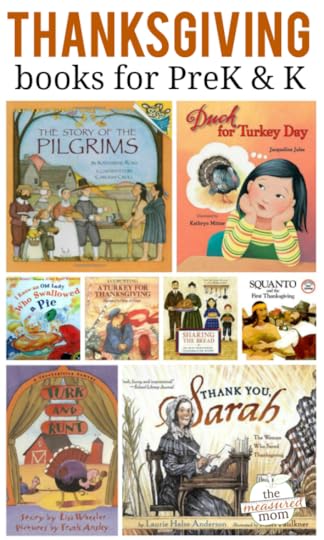
Sometimes I think our librarians try not to make eye contact when I walk through the door. Either that, or they roll their eyes behind their desks.
It’s just that I usually look a little silly. And plenty awkward.
Because I’m either fiercely whispering that the kids need to be quiet and walk, not run – or I’m carting an overflowing crate out the door (with six kids in tow).
But I don’t mind. One of my greatest joys is putting together themed book lists for early childhood. These days I’m reading to our fourth (almost 5 years old) and our fifth (almost 3 years old). They’ve helped me find the best of the best Thanksgiving books for preschool and kindergarten!
Thanksgiving books for Preschoolers & Kindergartners
Run, Turkey, Run! by Diane Mayr
As Thanksgiving dinner approaches, Turkey’s one goal is to elude the farmer. He hides all over the barnyard, but Farmer finds him every time! Young listeners will love chiming in on the repeating refrain, “Run, Turkey, run!” And all will enjoy the satisfying ending – when Turkey finally finds a good hiding spot … and Farmer’s family eats grilled cheese sandwiches for Thanksgiving.
‘Twas the Night Before Thanksgiving, by Dav Pilkey
This book was one of our favorites. Written by the author of the delightful Dragon books, it’s a sweet story about kids who fall in love with the turkeys they meet on their field trip to the farm. We love the hilarious way that the children rescue the turkeys from their Thanksgiving fate.
Fancy Nancy: Our Thanksgiving Banquet, based on the creation of Jane O’Connor
I’m not usually a fan of series books that are no longer written by the original author, but Fancy Nancy always delights. In this book, Nancy is disappointed to be seated at the children’s table for Thanksgiving dinner. After moving up to the fancy adult table, she realizes that the kids’ table isn’t such a bad spot after all. This is nothing spectacular, but it’s a nice, cozy book.
Thanksgiving Is… by Gail Gibbons
I’m of two minds when it comes to Gail Gibbons’ books. On the one hand, she’s a genius. She’s written and illustrated countless nonfiction books for kids – on nearly every topic you can think of.
On the other hand, I find that her books often lack voice and are just too dense with information, especially for the young audience they’re written for. I was pleasantly surprised that my Four listened to this entire book – from the history of Thanksgiving in other cultures to how we celebrate it in America. This is one of Gibbons’ shorter books.
Sharing the Bread, by Pat Zietlow Miller
We love this rhyming, rollicking book about getting Thanksgiving dinner on the table in the old days. The rhyme will keep kids engaged, and the beautiful illustrations will give them a quick history lesson.
A Plump and Perky Turkey, by Teresa Bateman
This is a silly rhyming book about a town who wants turkey for Thanksgiving dinner… but can’t find a single turkey to put on the platter. (They’ve all flown the coop!) What are the townspeople to do?
The cunning townsfolk stage an art contest in which participants will carve turkeys out of different media. As they advertise for a turkey model, a plump and perky turkey comes to town. After the contest, the townspeople plan to gnab the turkey and roast him for supper. But he’s too smart for them… and they end up with shredded wheat instead.
The Memory Cupboard, by Charlotte Herman
This book is a tender one, and has a different tone than many on this list. It’s about a family who gathers for Thanksgiving, and a granddaughter who accidentally breaks a treasured gravy bowl. But her dear grandmother isn’t upset. Instead, she shares a memory cupboard full of other broken treasures.
Squanto and the First Thanksgiving, by Teresa Celsi
The book is a little dated (1989), but it’s a fantastic read for little listeners who don’t have the patience for longer books. I love the simple history lesson and beautiful illustrations. My Four listened to this one several times – willingly!
Five Silly Turkeys, by Salina Yoon
This is a very simple board book with a sweet rhyming story – perfect for toddlers and young preschoolers.
I Know An Old Lady Who Swallowed a Pie, by Alison Jackson
I’m a fan of any retelling of I Know an Old Lady Who Swallowed a Fly. I guess I’m biased, because this was an old song I loved to hear my mom sing to me when I was a kid.
This book is an absolutely hilarious, completely absurd Thanksgiving version of the old song. The old lady swallows a pie, some cider, a roll, a squash, an entire turkey… we read this countless times and never tired of it.
The Story of the Pilgrims, by Katharine Ross
My Four is on high alert for “boring” books these days, and I often find that I’m left reading to myself if the book doesn’t have a gripping beginning. I found a winner in this one! It was a lovely nonfiction book and a nice antidote to Gibbons’ books. I appreciate that it’s told as a story instead of a listing of facts.
The illustrations are appealing, and there’s just enough details to keep my Four’s interest without boring him. My only complaint is that in the section about the feast, no mention is made of giving thanks to God. We added that part. 
A Turkey for Thanksgiving, by Eve Bunting
Poor Turkey is terrified when Mr. Moose brings him home for Thanksgiving dinner – but imagine his surprise when Mrs. Moose pulls up a chair! I highly recommend Bunting’s modern classic.
Turkey Trouble, by Wendi Silvano
This is a hilariously illustrated book about a turkey who masquerades as different farm animals so the farmer won’t roast him for Thanksgiving. He’s finally successful when he dresses up as a pizza delivery man, and the farmer’s family has pizza for Thanksgiving.
Duck for Turkey Day, by Jacqueline Jules
When her teacher tells the class to have a happy “turkey day,” Tuyet is concerned. Is it okay to have duck on Thanksgiving? As her family buys a duck and other fixings at the Vietnamese market, Tuyet is worried that she’ll be different from all her friends. She has a pleasant surprise when she returns to school.
The Know-Nothings Talk Turkey, by Michele Sobel Spirn
This is a funny book about the Know-Nothings, four silly friends who know nothing about Thanksgiving. They’re on the hunt for a turkey to serve … but not in the way you’d think! Be sure to check out the other books in this fun series.
Thanksgiving Treat, by Catherine Stock
We loved this gentle book about a little boy who feels left out on Thanksgiving. No one needs his help – from Grandma who wants him to stay away from the hot oven, to Daddy who warns him to keep back as he chops firewood. Finally, the boy helps his grandpa pick fallen chestnuts for a special Thanksgiving treat. This book will strike a chord with preschoolers who are never quite big enough to do the things they want to do.
The First Thanksgiving, by Nancy Davis
If you want a simple board book to teach the concept of Thanksgiving in just a few pages, this is it. I love the simple text, engaging pictures, and sturdy flaps. Recommended!
Give Thanks to the Lord, by Karma Wilson
I love the Christian perspective in this heartwarming rhyming book. The book celebrates the joys God gives us in everyday life but especially on Thanksgiving – the visiting relatives, the cozy house, the delicious smells, and the satisfying dinner.
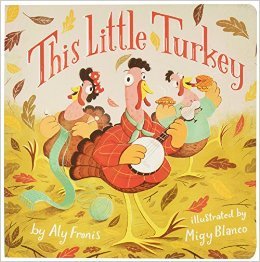 This Little Turkey, by Aly Fronis
This Little Turkey, by Aly Fronis
We loved this funny little version of the familiar “This Little Piggy” rhyme. Even though it’s a board book intended for toddlers, my Four and I chuckled every time I read it.
Turk and Runt, by Lisa Wheeler
We loved this tale of two brothers, Turk and Runt. Turk is the bigger, stronger turkey, and the only one their parents notice. Mom is convinced he’ll be a professional dancer. Dad is sure he’ll play professional football. But little brother Runt knows the truth … the only recruiters on the farm are looking for Thanksgiving dinner!
Thank You, Sarah, by Laurie Halsen Anderson
If you want a book that is brimming with voice, appeal, history, and beautiful artwork, don’t pass this one up! I am in love with this true story of a 19th century woman who fought to make Thanksgiving an American holiday. Highly recommended… for all ages!
Longer Thanksgiving books for older listeners – or more patient ones 
The Thanksgiving Story , by Alice Dalgleish
The First Thanksgiving , by Linda Hayward
Pilgrims’ First Thanksgiving, by Ann McGovern
If You Were at the First Thanksgiving, by Anne Kamma
Check out our Apples, Leaves & Pumpkins theme…
MEMBERS GET PRINTABLE BOOK LISTS!
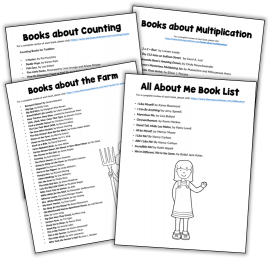
Members of The Measured Mom Plus get one-click access to each of our printable book lists … not to mention practical video workshops, no-print resources, and hundreds of printables. Not a member yet? Learn more here.
CHECK OUT ALL THE BOOK LISTS IN THE MEMBERSHIP
The post Books about Thanksgiving appeared first on The Measured Mom.
November 15, 2020
What to do when your writers WON’T WRITE
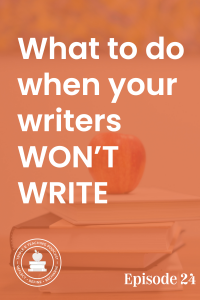
TRT Podcast#24: What to do when your writers WON’T WRITE
You want your students to love writing time … but some of them don’t. And their refusal to get started is starting to make you dread writing time as well!
How can we help our learners who just won’t write?
In this episode you will discover:
Why it’s not that surprising that some students won’t write
The one goal you should have for each of your students
Simple strategies that will give struggling writers the support they need
Listen to the episode here
Full episode transcript
Transcript
Download
New Tab
You are listening to Episode 24: What To Do When Your Writers WON'T WRITE.
As I was thinking about this episode and doing a little research online, I Googled what to do when your students won't write. Wow! There were a lot of articles! I mention this to let you know that this is a very common problem. So please, don't think that just because you have a student (or three or four) who sit there and won't write during Writing Workshop, that this is because you're a terrible teacher. This is normal! We should all expect to have at least one student per year that just sits there and won't get started. Most likely you'll have more than one, so don't be too hard on yourself. Today we're going to go through a lot of different strategies that you can use to help students who just won't write.
The first thing I recommend is to get to know the student better. Think about how the student behaves the rest of the school day. Do they refuse to do their reading work? Do they refuse to do their math sheets? Do they refuse to participate in social studies and science, or is this just writing time? If it's mainly just writing time, we can probably rule out a behavior issue or an attention issue. It has to do with something about writing. Now, if you ask the student, "Why won't you write?" They'll probably say something like, "I don't like writing" or "I hate writing," but it goes deeper than that. Even if they don't know the answer, it's your job to help figure out what it is and then address the issue.
A lot of times, I think it's just that kids are afraid. They really don't know how to do it and they're afraid that what they do will be wrong. Maybe they're little perfectionists and they know they can't write perfectly so they don't want to try. Maybe physically, it's just hard to be holding that pencil for a long period of time. Honestly, it may just be because there are other things they'd rather be doing. This isn't at the top of their list, so they'd rather just not be doing it. We need to figure out what's causing them to be stuck and address the issue.
I have a quote for you from Two Writing Teachers, which is a great blog for learning strategies for teaching writing. The author wrote this, "When people ask me what to do when kids won���t write during Writing Workshop, I worry that they are hoping for a magic cure. The one amazing minilesson or conference that will get kids writing. Believe me, I wish I could say, 'Abracadabra!' and POOF! Everyone writes!
"Unfortunately, my answer isn���t usually what people want to hear, but it���s the truth. Assuming you���ve already done everything humanly possible to set up an inviting, safe, inspirational classroom environment, that you���ve partnered the student strategically with others, you���ve provided all sorts of resources, materials, space, strategies��� The truth is, you can���t solve this problem without doing more work. You have to do work to get to the bottom of the problem. Otherwise, this will happen again and again and again for the student. This year, and next year, and possibly every year until somebody somewhere figures out why the student has so much trouble getting started."
Again, that's from Two Writing Teachers and I will leave the link to that blog post in the show notes. My point of reading that long quote to you was just to reiterate that we can't solve this problem with a snap of our fingers. It's going to take some time but it's worth it. If you help the student break through that writing wall, you are setting them up to be successful as a writer in all future grades. So you have an important responsibility here and I have every confidence that you're up for it.
In this episode, I'm going to give you things to fill your toolbox. I'll give you ideas and things that you can try when you have a student who just won't write. I hope that at least one of these will do the trick and make all the difference for your writer!
The first thing I want you to remember is this quote from Teacher Off Duty, which I will link to in the show notes. "My philosophy for teaching is to push students from where they were yesterday rather than to get them to where everyone else is today." I cannot agree with that more. In fact, I often say that same sort of thing to teachers and parents. Our goal is not to get everyone to the same point on the finish line. It's to get them farther than where they were when they started the year. Remember, it's baby steps. Get them a little farther than they were yesterday.
Along that same vein, this may have to do with length of their writing. So if you have a third grader who's writing three sentences and that's all, you could draw a line on their paper and say, "Today, I want you to write up to this line." The next day, you can make that line go just a little bit farther.
Something else I want you to do is to start from a place of empathy. Think about something that you will not do in front of other people, whatever that may be. Maybe it's dancing, singing, playing an instrument. For me, it's team sports. I can tell you exactly why this is: PE class, way back when I was in fifth grade. I was a new student at a big school. My previous school was very, very tiny, and all of a sudden I was in this big school with hundreds of kids. We had structured gym classes which I'd never had at our tiny school. I knew next to nothing about sports because my parents weren't sports people. We didn't even play catch in the backyard.
So here I was and it was like the first day of school. We were playing volleyball which I honestly didn't know anything about, and we were standing in different places when the teacher told us to rotate. All of a sudden everybody was going in all these strange directions, and I had no idea what they were doing. All of a sudden, I find myself standing in the corner of the court holding a ball. I didn't know what to do with it! I really didn't! Everybody was yelling at me, "Come on, stupid! Serve the ball!" I wanted to just shrink right into that gym floor. I didn't even know what that meant, to serve the ball. I didn't know what I was doing, and I was an extremely shy child, extremely. So this just made it so much worse.
I remember the teacher looked at me and I remember her saying something like, "Hang on. Maybe she's never played volleyball before." This never occurred to anybody because they'd been doing this for years!
Ever since, I've hated any kind of team sport because I have to say, unfortunately, that experience repeated itself with all the other sports in gym class over many years. What would it take for me to be willing to play volleyball, an actual volleyball game, in front of people?
I'll tell you where things changed a little bit for me, and that was in college. When I was in college, that's a whole other subject about why you would have to take gym class in college, whatever. But my classmates were unusual in that, just like me, they were all planning to be teachers. Guess what? Nobody called me stupid and everybody was patient. In fact, there were even students who went out of their way to show me how to do something, even though they didn't have to do that. Suddenly, gym class wasn't so bad. I still didn't like it, but I didn't hate it and I even had fun once in a while. Your student NEEDS you to be their cheerleader and their coach, not the one who hangs over them and tells them they haven't done it again. If the reason they're not writing is because they lack confidence, you can change that! You can change that by accepting whatever they do, at least at first.
This is a quote from Third Grade Doodles, which again I will link to in the show notes. "As your students are getting to know you and your classroom environment...ACCEPT EVERYTHING that they write, give lots of praise and publicly acknowledge their efforts as a writer....even if it is only one little sentence...or even just a word!! When they begin to feel safe and trust you, then you can begin to help them to set writing goals." That is such good advice, but very hard to follow because we want to see everyone get to the same finish line at the same time. That's not going to happen if you have more than one student in your classroom which, of course, you do!
Something else you can do when students just won't write is to consider working with the parents. This will not work in every situation. But I mentioned in another episode about how my daughter's first grade teacher came up to me in the parking lot. She told me that she was really struggling during writing time. She said she hated writing, was crying, and wasn't writing anything. For me as a parent, this was disappointing to hear, but not surprising. I mean, my daughter is known for flopping on the floor at home when she doesn't get her way or is frustrated by something. I also know she's a very smart little girl and very capable of writing.
So I knew this wasn't because she couldn't do it. It's because she was hitting some kind of roadblock, and in talking with her teacher, it seemed to be topic selection. That day after our family finished our Friday chores (because I like a clean house on Saturday so we clean on Friday nights), I walked with her to the local Walgreens. We picked out a tiny little notebook that she could use to store writing ideas. She really wanted some foil stars that she could put on each writing ideas so we bought those too.
I did this for two reasons. Number one: her love language is individual time with her. So I knew that just she and I walking to the store and getting this notebook was the way to go, versus me stopping in the store after school and grabbing it while the big kids were in the van with the little kids. Number two: she needed a tool. She needed a way to store the ideas that she had, something she could bring back and forth between home and school. We've only been doing this for a few days, but I know that things are going better. I also expect she will have more writing roadblocks because that's just real life. But it means we've found a solution, at least for now, to this problem. It works for as long as it works. When it stops working, we'll try something else.
The point is that we did some problem solving! I thought about something that would help, and we tried it. Thankfully, we were successful. It also helps me as a parent to know this is a problem, because then I can talk with her in everyday life when there's something she could write about. For example, the other night she was playing with her friend, jumping in leaves in the backyard. At supper that night, I said, "Hey, I thought of another idea you could put in your idea book about the time that you spent jumping in the leaves with your friend today!"
Including parents is a great idea when you feel like the parent will be supportive. If you think the parent is going to be punitive and kind of make this into a bigger issue than it really is, that may not be the way to go.
But if you can tell the parent, "Your child's not in trouble. I just want to help and I think that you are a great person to help in this situation. We are looking to help your son or daughter write more than one sentence, or learn to enjoy writing, or come up with writing topics, etc. Here's something I'd love for you to try at home." Or you can do what my child's teacher did, which is just tell me about it and then I found a solution. Do whatever you think is going to work, but getting parents on your team is a great idea.
Something else to think about is giving the child more time to write. What we don't want to do, although I admit I've done it, is hold threats over the child's head during writing time. For instance, "If you don't write now, you're going to write during recess!" I know, I've actually done that before. I hate to say it. I understand the frustration, especially when you have a child who is just so distracted and so not getting down to work, and they'll never do it unless you say something like that! I'm not saying you can't ever do that, but I am saying that's probably not the best tactic because we don't want to turn writing into some kind of punishment! We don't want it to be something they have to do when they've been bad.
Our end goal is twofold: we want them to be good at writing, but we also want them to like it. Because if they don't like it, they won't choose to do it. If they don't choose to do it, they won't get better at it. So when they're really struggling to get anything down on paper during your writing time, you can do a few things. You can make your writing time longer, which may be not be possible, or it may not be what you want to do. That's fine. You might find alternate times for them to write, but please present those in a kind, patient way. So you might say, "I've been watching you write during writing time and I noticed that it's really hard for you sometimes to get started during our twenty minute writing time. What's another time of the day that you think you could do some writing?"
It may be that this child comes in early every day and maybe they're fresher then. Maybe you give them a special writing cubby in the classroom, and after they've gotten their things put away, they sit down and get started. That may not work for every child, but that's just one other possibility. So try to get creative as you give them more time to write. If a child is really struggling to find a topic and nothing seems to work, and you feel like you're just feeding them topics over and over (which gets really annoying and exhausting), you can do something you would not do with the rest of your class. Let them choose between two topics.
Hopefully, you're getting to know your students well, and you can say, "Okay, I know you have a baby sister at home and I know you have a pet dog. I want you to either write a story about your sister playing with you, or write a story about something you do with your dog. Which one is it going to be?" Then they have to choose. They have to because they're not choosing one on their own. Now that's not ideal, right? But sometimes if we just have to get past this hurdle that they won't write at all, we do something like that.
Remember, this is baby steps. We're not going to all get to the finish line at the same time. We're trying to get them farther than they were yesterday. If yesterday was that they couldn't think of anything to write about and nothing was on their paper, today would be getting a topic and at least writing a sentence.
Another idea is from Mark Overmeyer, who has a book all about challenges of Writing Workshop and I'm going to link to his blog post. In his blog post, he suggests sharing the pen. I'm going to read to you what he says, "If students have an idea, but do not begin writing, then share the pencil. You write the first sentence or two and then ask them to continue. Many teachers fear this will lead to dependence, but I've never found this to be the case. I just want the paper to have some writing on it as quickly as possible. I write what the student says, like a scribe, and then I walk away, promising to check in shortly."
"If there's no new writing on the page when I return, I reread what I wrote and say, 'What's next?' When the student responds, I say, 'Great. Just write that part. I'll be right back to check on you,' and then I walk away and I come back quickly. Walking away is the key here. If you stare at the blank page, hoping they'll write, you might increase stress. Walking away sends this message, 'I know you can get something on the page, I trust you will, and I'll be back to see what you have done'." So there is a tip from Mark Overmeyer.
Another idea is to bring the child up with you during a mini lesson and use them as your helper as you do some model writing. You would be working together to write, perhaps a personal narrative based on this child's own experience. Together in front of the class you come up with a topic, you ask them questions, and they help you craft and write the sentences. You may be doing most of the work, but they are there to support you. Then you can call it "Jenny's Story" or "Sam's Story", and they have some kind of ownership with that and they see what they can do with help.
Another idea for kids who just won't write is to give them a partner that they can talk with before writing time begins. Even though we're all very hesitant to do this, you might consider making this person their friend. I think back to myself and sports, and what if the teacher had assigned one child to help me learn to serve a volleyball. I probably would not have wanted it to be a student that I didn't know. If they could give me a friend who I felt safe around, that would have been a better idea. So if possible, assign a friend to this child and they get to be together for maybe three minutes at the beginning of writing time to chat about what this child is going to write about.
Another idea for the whole class and this particular child is to do a lot more shared writing. We often model how to write, but shared writing is when you talk together about what's going to come next on the page. There's also something called interactive writing and that's really great for this. If you're a member of my membership, The Measured Mom Plus, you should definitely watch that training. I keep all the trainings short, usually under 30 minutes, so you can watch them quickly. There's even a printable transcript. You can read it if you don't want to watch it. It will give you a lot of really good tips for interactive writing. I'll link directly to that training in the show notes so if you're a member, you can quickly find it and watch it.
We've talked about a lot of things in today's episode. Let's sum it up: -Don't feel bad when you have a student or more who just doesn't write. This is completely normal. Just Google it and you'll see lots of other teachers who have this problem.
-Get to know your students well and come at this from a place of love.
-Have your writing time earlier in the day when you have more patience and you're willing to work through this with your students.
-Try different solutions, remembering that what works for one will not work for everyone else.
-Consider involving parents if you think that will be helpful.
-Do more shared and interactive writing with the class.
-Have students jot down writing ideas, whether those are drawings or actual sentences in a notebook that they keep and transfer from home to school so their parents can help them think of writing ideas. Their parents know them better than you do. So they'll be able to help them find writing topics even more.
-Be patient, accept everything at first, and remember, your goal is not to create a perfect writer today. It's to move this writer farther than they were yesterday! That may mean getting just one sentence on the page so that a month from now, they have half a page written during writing time.
We're going to cover a lot more things about helping struggling writers in the coming weeks. So stay tuned!
Scroll back to top
Sign up to receive email updates
Enter your name and email address below and I'll send you periodic updates about the podcast.
powered by
Links mentioned in this episode
The Amazing Cure for Students Who Won’t Write (Two Writing Teachers)
What to Do for Writers Who Refuse to Write (Teacher Off Duty)
Help! They Just Won’t Write! (Third Grade Doodles)
What if They Won’t Write Anything? (Mark Overmeyer’s Blog)
The post What to do when your writers WON’T WRITE appeared first on The Measured Mom.
November 9, 2020
Tips for teaching writing virtually in K-3
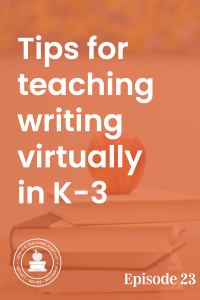
TRT Podcast#23: Tips for teaching writing virtually in K-3
Raise your hand if you can’t wait to teach your students face-to-face!
Until the pandemic has passed, many of us find ourselves teaching our students from a computer. It’s less than ideal, to be sure!
But you can still take everything you know about teaching writing and adapt it for the virtual classroom.
In this episode we will:
Look at different options for teaching mini-lessons
Learn how to support parents as they become their children’s writing coaches
Consider a unique way to approach sharing time
Listen to the episode here
Full episode transcript
Transcript
Download
New Tab
You are listening to Episode 23: Tips for teaching writing virtually.
I'm really hoping that this podcast episode is going to be listened to a lot in 2020, and then, maybe never again.
Teaching writing virtually is not easy! I know that you're doing it because we are in the middle of a pandemic, and many schools have mandated that children must be learning from home. And so, teachers are teaching via Zoom, through the computer, and it's just NOT the same. My heart goes out to you (big virtual hug) because it's required you to learn a whole bunch of new things that you maybe didn't want to learn. It's creating a new kind of exhaustion. I know that you are doing what teachers are doing everywhere - you are doing your very best. I thank you for that.
This is going to be released in November, which means a lot of you have already been doing virtual teaching for a couple of months.So I won't be able to tell you how to get started, but I do hope that this will give you some things that you could improve or change that will make things go better for you and your students.
I should also say, that like you, this is my first pandemic. I've never done this before either and I'm not actually doing it now. However, I can do research and strategize about what I think will work best. So take my tips with a grain of salt, but I do hope they will perhaps give you some new ideas and a new perspective on teaching writing virtually.
Tip number one: Give yourself grace. Maybe you've heard that a lot in the last few months. Maybe it's getting annoying, but it's just something you need to do. We weren't meant to teach writing virtually. We were meant to be able to be in the classroom WITH our students. Where we can go right up next to their little shoulders and look over their writing with them, let them read it to us, and where we can make suggestions or ask questions. We weren't meant to do this over a computer screen. The fact is that teaching writing, while incredibly rewarding, is not easy even face to face! So it's not going to be easy on the computer either. However, this is the situation we find ourselves in. If you have an indefinite period of teaching virtually, or it's more than a month or two, we do have to think about how to do this in the best possible way.
Besides being patient with yourself and giving yourself grace, my second tip is to have a routine when you teach writing virtually. It is similar to the routine you have when you teach it in person. So for me, that would be a mini lesson, an independent writing time, and sharing time. I would work very hard on building that into your writing lessons so that your students know what to expect, because routine really does help. If possible, have writing time EVERY day, even though you're teaching virtually. That may not be something you want to do, but if possible, I would do it. Kids really need that practice and that daily expectation that they're going to write.
My next tip has to do with your mini lessons. I would say, teach the same mini lesson that you would teach if your students were in the classroom. What you might want to do is pre-record it and you can watch the recording WITH your students! You can even pause it to ask questions about the recording. The nice thing about recording it is that it may be easier to model yourself doing the writing.
Since my teaching tips are pretty much up through third grade, I would model physically writing, not writing on a computer screen. I actually think that kids up to third grade, at least, should be doing their Writing Workshop time on paper and not on a screen. They need to puzzle out spellings; they need to have this experience of crossing out and changing things. Also it allows you to see a record of what they've done. If they're typing on a screen, all you can see is the final product. I would make sure that you're modeling it by recording yourself writing on a dry erase board or chart paper. If it's easier for you to do that in advance, rather than live, then go for it. The nice thing about that too, is that you can batch produce them. So, maybe on the weekend you record three, four, or five writing lessons. Then you're ready to go the following week.
As you're giving these mini lessons, you're going to have to find a way for your students to be able to interact with you. I know that's hard, it's just not the same as being at school! So, if you're pre-recording those lessons, you might want to build in some questions where kids maybe put their thumbs up or their thumbs down. A lot of times when I'm giving live trainings to teachers about teaching writing or teaching reading, I like to build in questions just to keep people's attention and to have them participate. They can put their answers into the chat box. You can do the same thing. For example, "Boys and girls, today, I'm going to write a story about my pet cat, Grover. It will be about the time that she stayed out all night. Do any of you have a cat? Put a thumbs up if you have a cat."
The nice thing about this is that it's different than in the classroom where they're all talking about their cats and then you can't move past it! If you're doing your writing mini lesson virtually, they can just give you a thumbs up! They get the satisfaction of knowing that they told you something about themselves, and you can keep the lesson moving. That's one very small benefit to teaching virtually.
As you're giving these mini lessons, I would also be sure, when possible, to read a mentor text. A mentor text is a picture book or something that you've written yourself, that illustrates an example of what you're trying to teach that day. So if you're teaching personal narrative, you might read a personal narrative children's book. Again, this could be something that works really well being recorded in advance. Then you can pause the recording as you're watching it with the students, to ask questions and allow them to interact with the story.
So far we've talked about giving yourself grace, having a routine, and teaching the same mini lesson that you would teach if you were teaching person to person. Number four is to have your students write independently every day. This is where it's a little tricky, right? Because, what are you going to do while they're writing? How's this going to work? Are their parents going to do all the writing for them? How can you make sure that a child is ACTUALLY writing? This is where you're going to have to put on your problem solving hat, which I know you have, and you've used it a lot lately. But you have to put it on again and talk to your students about: what they're going to do, where they're going to do it, how they're going to show it to you.
After I've given a mini lesson about writing about something that's happened to me personally, I might say, "Before we go, I want each of you to tell me the one thing you're going to write about today." You might say, "Tell it to your mom or dad." It depends on if they've got parents there and they want to put a thumbs up that their child has an idea. You want to check in and make sure that they're ready to go. And then what you might do is keep the computer on, maybe put on some music, and everybody just writes for a certain period of time. You might expect them to write three sentences if they're in first or second grade. If they're in second or third grade, you might say, "Today, I want you to write a little bit more than you wrote yesterday." They could compare what they wrote yesterday to today. That's not what we really want to focus on; we're not trying to focus on quantity. Sometimes if you're just trying to get accountability in here and you just want them to produce something, you may have to start with that.
Ideally, in the classroom, you are moving around and offering support to individual writers, but that's going to be really tough to do during virtual teaching. So, you're going to have to enlist the parents to help as much as possible. I'm fully aware that some parents won't be capable of doing this because their lives are just too busy. Or for whatever reason, that just isn't something you can count on them for, but I do hope you have a fair number of students' parents who want to help. What you don't want them to do is tell their child exactly what to write, or tell them how to spell everything. Because then they're undoing the things that you're teaching, which is independence.
I'm going to include in this podcast episode a freebie for you! The freebie is tips for parents, as in, what to say when. I'm going to include them for different grade levels. You can take them and share them with parents. They'll be things like: what to say to your first grade writer when your child doesn't know how to spell a word, what to do when your child doesn't know what to write about, what to do when your child isn't using periods, etc. It won't be long, but I'm hoping that this little guide will help you support parents as they support your students.
Of course, the final phase of the Writing Workshop is sharing time. In a classroom, I know we often want to skip it. I know I always wanted to skip it because I didn't understand at the time, that sharing time isn't just sharing, it's teaching. So really what you're looking for, is something that can teach the rest of the class. Now you can do this however you want, but here's what I would try. I would ask parents to snap a picture of what their students did for writing that day and share it with me somehow (however you have that set up). Then, I would display a child's writing the next day during sharing time. Now I'm guessing you'd probably want to get permission. So maybe, email the parents and say, "Could you ask Johnny if I may share his writing with the class tomorrow?" Then you can use that child's writing to celebrate something the child did based on your lesson.
Let's say that I'm teaching about personal narrative, writing about something that happened to you. Let's say Sarah wrote about the time that her little sister chewed on her new stuffed animal. It doesn't have to be anything earth shattering here, but she did what you said. She wrote about something that happened in her life. Even if she wrote just one sentence, if she did what you wanted her to do, then share it with the class, talk about it, and celebrate it!
I think that displaying someone's writing on the screen and talking about it for two or three minutes can really go a long way to helping students participate better in the hopes that THEIR writing will be chosen. You'll want to try to choose everybody's writing, right?
It will also teach them something. Remember that sharing time isn't just this annoying five minutes you have to add to writing time. It's actually a time for them to learn, so that they can apply what they learn to their writing the next day.
That was our podcast episode about teaching writing virtually. I know I did not to solve all of your problems, and I'm sorry for that. I sure wish I could! My hope is that you got at least a couple of nuggets in there that are things you can try that will help improve your virtual teaching experience. I hope it will help you and your students look forward to writing time.
You can find the show notes for this episode, including those tip sheets for parents at themeasuredmom.com/episode 23. Next week, we'll be talking about what to do when your writers just won't write. We'll see you then.
Scroll back to top
Sign up to receive email updates
Enter your name and email address below and I'll send you periodic updates about the podcast.
powered by
Member resources
If you’re a member of The Measured Mom Plus, you have access to these trainings that will support you as you navigate this new way of teaching:
Mini-course: How to teach your students remotely
Quick win: Smart tips for teaching virtually
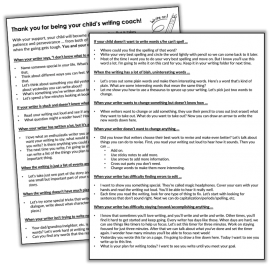
Get your free parent tip sheets!
CLICK TO DOWNLOAD
The post Tips for teaching writing virtually in K-3 appeared first on The Measured Mom.
November 4, 2020
Veterans Day books
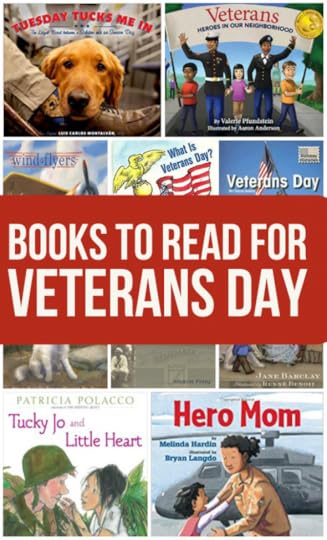
I grew up near a large naval base. Many of my friends had dads who served in the navy – dads who were “out to sea” at least half the year. I remember how excited they were when the deployment was nearing its end!
I have a huge amount of respect for those who serve in the military and for the families that keep things running while their loved ones are away. (If you’re one of them, thank you! And if you’re looking for support, I highly recommend this blog. )
In America, we have a special holiday on November 11 to thank all military personnel who have served in past and present wars. It’s called Veterans Day.
I encourage you to use the holiday as an opportunity to reach out to veterans in your community. Talk with your learners about the sacrifices veterans have made for our country. Here are some books to help you do just that!
Veterans Day, by Rebecca Rissman
guided reading level: F
This is a beautifully simple book about Veterans Day to read aloud to preschoolers or to have beginning readers read on their own.
Veterans Day, by Mir Tamim Ansary
approximate guided reading level: M
This book goes tells the history of Veterans Day without getting bogged down in details. The format is very neat and easy to follow, making this a great book for young readers who are learning to read nonfiction. I like that it has a table of contents, glossary, and index.
Veterans Day, by Rebecca Pettiford
guided reading level: J
This is a lovely, simple book – another great read aloud for preschoolers or a good book for beginning readers. If kids can read books like Henry and Mudge, this is a good level for them.
Veterans: Heroes in Our Neighborhood, by Valerie Pfundstein
This book introduces children to veterans and helps them see that they may meet many veterans in their everyday life. In rhyming text, the narrator reveals the veterans who live and work in her neighborhood. I love that the back of the book reveals that these are all real people; we can see the official military photo of each person and learn more about how they served.
What Is Veterans Day? by Margot Parker
This is an older book (1986), but I highly recommend it because of its friendly illustrations and engaging text. I like the way this book uses conversation to teach about Veterans Day. Kids learn about the different branches of the military, the freedoms that our veterans have helped us keep, and even ways that other countries honor their veterans.
Tuesday Tucks Me In, by Luis Carlos Montalvan
In this true story, Luis suffers from post-traumatic stress disorder and traumatic brain injury after his serve in Iraq. His service dog, Tuesday, helps him as he navigates the challenges of daily life in a big city. I love how this difficult subject is told from the perspective of a dog. The book is written so that young children will enjoy it, but I also recommend it for older listeners. It can begin an important discussion about how we can support our veterans after they return home.
I absolutely love this book and highly recommend it, but I’m so sad to report that I learned that the author died from an intentional overdose a few years after its publication. This is certainly a sobering reminder that our veterans need our love and support.
Granddad Bud, by Sharon Ferry
This book isn’t exceptional in either text or illustrations, but it’s a good teaching book. It explains exactly what Veterans Day is, why we celebrate it, and tells a story at the same time. I would use it as a read aloud through second grade.
Hero Mom, by Melinda Hardin
This is a simple book about military moms and the important work that they do. A lovely read aloud for kids in preschool and kindergarten. Also check out the related book, Hero Dad.
Windflyers, by Angela Johnson
This is a poetic story about the Tuskegee Airmen, a group of African-American military pilots who fought in World War II. I love the topic, and Loren Long’s illustrations are (as always) fantastic. But I wish the book was less lyrical and more informative. It’s a great story, begging to be told, and I don’t feel that this book did the Tuskegee Airmen justice. It’s still worth finding and reading aloud to your learners.
Proud as a Peacock, Brave as a Lion, by Jane Barclay
With simple text and beautiful illustrations, we see a boy and his grandfather having fun together as they prepare for a Remembrance Day parade (Canada’s Veterans Day). I love how the book touches on the seriousness of war in a way that’s appropriate for young listeners. Highly recommended!
Tucky Jo and Little Heart, by Patricia Polacco
This is an incredible (mostly) true story about a young Kentucky soldier serving in the South Pacific in World War II. He befriends a small village girl who has been traumatized after seeing her mother killed by the enemy. Kentucky Johnnie, or “Tucky Jo” as the girl calls him, spends his spare moments providing food for Little Heart and the rest of her village. Many years later, Tucky Jo and Little Heart meet again … and she returns his kindness. I recommend this for advanced listeners in first grade and beyond. Even middle schoolers will enjoy this read aloud.
Rags: Hero Dog of WWI, by Margot Theis Raven
This is the amazing, (mostly) true story of a stray dog who was adopted by an American soldier in Paris during World War I. Rags quickly became the combat unit’s mascot – but he did more than that. He rooted out rats from the trenches, delivered important messages across the battlefield, and warned of incoming shells – until the day both he and his master were injured in combat. I’m not a dog person (at all), but I really loved this book!
MEMBERS GET PRINTABLE BOOK LISTS!

Members of The Measured Mom Plus get one-click access to each of our printable book lists … not to mention practical video workshops, no-print resources, and hundreds of printables. Not a member yet? Learn more here.
CHECK OUT ALL THE BOOK LISTS IN THE MEMBERSHIP
The post Veterans Day books appeared first on The Measured Mom.
November 1, 2020
Do’s and don’ts for teaching young writers
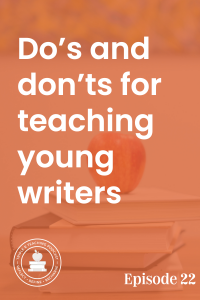
TRT Podcast #22: Do’s and don’ts for teaching young writers
You know teaching writing is important, but you keep running into roadblocks. Your students are at such different places … can you really meet all their needs?
This episode kicks off an 8-part series about teaching writing. We’re going to tackle those roadblocks head-on!
In today’s episode you will learn important do’s and don’ts for teaching writing in K-3. You will also discover:
The best approach for teaching writing
An important tip to follow when writing in front of your students
When to schedule writing time
Listen to the episode here!
Full episode transcript
Transcript
Download
New Tab
Episode 22: Do's and don'ts for teaching young writers.
So I'm going to start this episode with a little backstory. Last week my daughter's wonderful first grade teacher, whom I love and respect very much, came to me in the parking lot. She told me that my daughter was having a hard time during Writing Workshop - to the point that one day she was in tears! The main issue was that she could not think of what to write about and she was shutting down. Now, this is my little girl, and I know how she shuts down. This did not come as a big surprise to me. We've been working on this at home, which I'll get to in a future episode.
But my point in bringing this up is to show you that teaching writing is an exercise in problem solving. My daughter's teacher has been teaching for a long time. She's a wonderful person and a spectacular teacher. Even though she's been doing everything right, she still has students like my daughter who need extra support. Here's the secret that no one wants to say out loud: teaching writing was never meant to be easy. It's not for people who rely heavily on worksheets and prompts. Teaching writing is for creative, problem solving teachers, like my daughter's teacher, who love their students and are always looking to improve their craft. Teaching writing is for teachers like you.
I have EVERY confidence that you can do this and that you can do it well. Starting today, I'll be sharing an eight part series about how to solve common problems when it comes to teaching writing. You and your students can look forward to writing time and enjoy it every day or almost every day. We're going to start today with do's and don'ts for teaching writing.
Number one: DO make time for teaching writing. Lately, when my first grader and her third grade brother get into the van after school, I do two things. I ask her to take off her mask because we're in the middle of COVID-19, and she's so used to that thing being on her face that she forgets she's wearing it! And then I ask her, did you write today? Now by that question, what I mean is, did YOU write today? When the teacher had you write, did you cry or did you think of something and write? But she always says, "Mom, I told you, we write every day." Even though she hasn't exactly answered my question, that's music to my ears because it means her teacher knows that kids can only get better at writing if they do it consistently. For that to happen, the teacher HAS to make it a priority.
Here's a good goal for you. Make writing time such an ingrained part of your day that your students never ask, "Are we going to write today?" Just like they never say, "Are we going to have lunch today?" They know they're going to have lunch; they should know they're going to have writing.
Our second do is: Do use the Writing Workshop approach. Now I've been over this many times on my blog and in other episodes, so I won't go into this in too much detail. But just a quick overview: the Writing Workshop is a structure that works for teaching writing across the grades. I would say kindergarten, even through high school, could use Writing Workshop. You teach a mini lesson appropriate to your students. Your students write independently for a period of time (of course, with very young children that could include drawing). And then they come together for a sharing time at the end. This approach can work in any setting, even virtual. Which (spoiler alert) we're going to talk about next week.
Tip number three: model, model, model. It is very tempting to put a journal prompt on the board or have a really quick mini lesson in which we just tell students what to do, but what we might skip is the SHOWING part. Students need to see you write. Most of all, they need to see you struggle with the same things that they struggle with. I challenge you to put yourself in their shoes. When you're thinking about the modeling you're going to do, try not to put too much thought into it in advance because your students don't get to. When you ask them to write, they just basically have to start from scratch. They haven't been spending the day before, most likely, planning what they're going to do. So I want you to try to do that. Challenge yourself to model writing without a lot of forethought.
So you might say, "Boys and girls, today, we're going to write about something real from our own lives. So I'm going to be in first grade today and I'm going to write just like you. I'm going to write up here on this big chart paper so all of you can see. What's the very first thing we need to do when we want to write?"
The first thing should be, think of a topic. What are you going to write about? So you want to help them see you do that.
So, "All right, boys and girls, let me think. You know, one thing we've talked a lot about in first grade is that we write about things that we've done with people we love. So, let's see... I remember when I was a little girl, I liked to play school with my sister. So I'm going to write about that today. Now, sometimes I find it helpful to think about a few things I'm going to write before I start, just to make sure I have some ideas for this topic. So I used to play school with my sister. We would play in our playhouse in the yard because it had a chalkboard. We used to use our old worksheets and workbooks from school. We used to put stickers on the papers. That's four fingers of ideas; I think I have enough to write about for this topic. So let me think about what my first sentence could be. Well, I'm in first grade, so I'm going to write this like I'm in first grade. I'm going to write, 'I like to play school with my sister.' Why don't you watch me write the sentence on the chart? Okay, now what else could I say? Well, I could think about what we do when we play school. We write on the chalkboard in the playhouse, so I'll write that next. 'We write on the chalkboard in the playhouse.'"
So there you go, you get the general idea. That mini lesson and that modeling is really about thinking of an idea and expanding on it. That's why I was really focused on what to write about and what to write next. You may have a different focus for your mini lesson, and then in that case you might focus more on those things. For example: what to do when you come to words that are hard, or how to revise your writing. But it's good to do a lot of this "thinking of an idea from scratch" and "getting started", especially if that's what your students are struggling with - which is a very common issue.
Tip number four: DON'T do all of the work for your students. Thinking of what to write about is actually a really big part of the writing process. Too often, we do this for our students, especially when we make a habit of having them write to a prompt in a journal. I'm not saying that you can never use journals or prompts. There are definitely times when those make sense, but it is not something you should be doing every day or have that being the only thing you do when you're teaching writing. Prompts should not be a regular part of writing time because students need to find their own topics.
In the same way that we don't want to do all their work of finding a writing topic, we don't want to do all their work for spelling. There are times that we will give a spelling, especially if a word they're going to use is going to be in the writing many times. We also have a word wall, and we show them how to use it. We might provide personal word walls. We're teaching them how to stretch out words and write the sounds they hear. If they're older, we teach them how to use a dictionary. We expect that they will spell patterns they've learned correctly. If you're not sure about the spelling thing, don't worry because I will have an episode coming up all about helping them with spelling during Writing Workshop.
Another thing that we tend to take over is the revising process. We shouldn't tell our students every little thing to change. We want to help them discover how to choose what improvements to make. If you're hearing that and thinking, "Fat chance, my students never want to revise." Don't worry because we'll be covering this in a future episode.
Number five is another don't: DON'T dive in too quickly. I am totally speaking from personal experience here because as a teacher, that was one of my biggest challenges. I had so many ideas that I thought were wonderful and that I wanted to start with right away. I didn't want to take the time to lay the foundation of procedures and routines to make sure it went smoothly. Often my great ideas, which were probably pretty good, fell on their face because I didn't spend the time in advance training my students: what to do when they need help, where to get the materials, what to do in different situations, etc. I ended up being interrupted and it just didn't go over well.
So you have to ease yourself into Writing Workshop. I definitely think you can start with Writing Workshop very early in the year, even the first day of school. But it's going to look a lot different than it's going to look three weeks from then. Writing time will be very short, so maybe two or three minutes of them actually being expected to write on their own, especially if we're talking kindergarten. You'll also be doing a lot more handholding at the beginning. You're slowly training them to be independent so that when you're ready to start individual conferences with students (again, coming in a future episode), they'll be more prepared for that and you'll get fewer interruptions.
Finally, tip number six: DO schedule writing time when you and your students are at your best. That's because all of you need patience. Your students need patience to work through those inevitable writing challenges, and you need patience as you watch them work through these challenges or get stuck in the process. Because they WILL get stuck, that's how writing works. I write for a living: I write blog posts, I create courses, I prepare these podcast episodes. Some days for me, the writing flows and flows and other days I just get stuck. And I've been doing this for a lot of years! We have to expect that our students are going to get stuck. Our goal is not to create environments where they're never going to get stuck because that's not realistic for any writer. Instead, we want to teach them strategies for what to do when they are stuck.
Now, certainly we want to create an environment where they're not going to get stuck every day. That's going to require a lot of things like modeling and supporting and teaching routines. But we can't be surprised when it happens. That's why it's important to schedule this at the beginning of the day, or if you have a break period for yourself, maybe right after that when you're fresh. Find a time that you are more likely to be patient when your students are stuck. Because if you've been teaching writing for more than a day, you know that it's going to happen. In a couple of weeks, I'm going to share an episode about what to do when students won't write. I hope that will help you solve this challenge of students who are getting stuck more often than not.
Let's recap what we talked about today. Tip number one: DO make time for teaching writing every day if possible. Number two: DO use the Writing Workshop approach: mini lesson, writing time, sharing time. Number three: DO model a lot. By modeling, I mean, basically starting from scratch a lot of the time. So have your students watch you think of a topic and develop it. Try not to prepare it in advance because that's not realistic for them, and you want to do what they're going to have to do. Tip number four: DON'T do all of the work. Don't think of all their topics for them; don't do all their spelling; don't always tell them what to revise. Number five: DON'T dive in too quickly. Take a few weeks to teach the routines and ease your students into Writing Workshop. Finally, number six: DO schedule writing time when you and your students are at your best - when you have the most patience.
Before I sign off today, I want to share with you two things that can help you as you teach writing. First, my guidebook for teaching writing. It's a Writing Workshop guide for K-8, so it has tons of ideas in there for how to start the year, how to teach routines, what mini lessons to teach, etc. Many of the chapters end with troubleshooting tips, like what to do when something isn't going well. I'd also like to share with you my online course, Teaching Every Writer, that I created with Becky of This Reading Mama. It's for classroom teachers and homeschoolers of kindergarten, first, and second grade. In that course, we go through all of this in great detail, and we include over 200 ready-to-use mini lessons for K-2. You'll find links to both of those in the show notes, which you can find at themeasuredmom.com/episode22. Thanks so much for listening, and I look forward to sharing the rest of our teaching writing series with you. Talk to you again soon.
Scroll back to top
Sign up to receive email updates
Enter your name and email address below and I'll send you periodic updates about the podcast.
powered by
Resources and links mentioned in this episode
Writing workshop guide for K-8
My online course, Teaching Every Writer
The post Do’s and don’ts for teaching young writers appeared first on The Measured Mom.
October 26, 2020
What to do when kids don’t like to read

TRT Podcast#21: What to do when kids don’t like to read
How can kids possibly get better at reading when they don’t like to read?
There’s hope!
In this episode you will discover:
How to make time for learners to read (and insist on it)
How to find books your students will enjoy
My TOP strategy for getting kids to enjoy reading
Listen to the episode here
Full episode transcript
Transcript
Download
New Tab
You are listening to Episode 21, What To Do When Kids Don't Like To Read.
This is the final episode in our eight part series about helping struggling readers. Today I'm sharing just three powerful tips that will help you help learners who don't like to read.
Number one is to make time for them to read and insist on it. Easier said than done, I know, but so very important! I know when one of my kids, who is now entering fifth grade was a reluctant reader back in third grade. It was really hard. It was like pulling teeth to get him to sit down and read a book. So, I realized the only way to make this happen was to put it in our routine and insist on it. Every day after school he had to sit on the couch and read for 20 minutes. This was so important to help him break through that reluctance and disinterest when it came to reading, because you can't learn to enjoy something unless you give it a chance.
I know in the classroom, most teachers have a specific time during the day that kids are expected to read independently. I would encourage ALL teachers to make sure this is a mandatory time and not a time that you have if you're done with your work, or if you're not doing something else, or if we have extra time. Build it into your classroom day, so that students know that from perhaps 1:15 to 1:40 they are reading independently. What I always recommend is that teachers move around the room during that time and have conferences with students about their reading. If you don't have this built-in time, it's going to be really hard for kids who don't like to read to ever learn to enjoy it. They need to have a time that they get to read books that they choose.
That brings us to tip number two: Find books that they'll enjoy that they can actually read. I won't go into reading levels here, but I will talk about how I think that you sometimes need to alter your definition of reading material, especially when you're dealing with kids who don't enjoy reading. Some books that kids really tend to get into would be comic books, like Garfield, Calvin and Hobbes, and Baby Blues. These are all funny, clean comics for kids of all ages. Then you can also give kids books like graphic novels, which are very popular these days. There are many different graphic novels that kids can read. I'll link to a few of the ones that my own kids enjoy in the show notes here. There are also books like the Guinness Book Of World Records. You see, there are many different options besides traditional chapter books that can help kids get enthusiastic about reading.
Of course, I definitely think that kids should be reading chapter books when they're ready for them, and that's why I spent six months creating The Ultimate Guide To Early Chapter Books Series, which you can find on my blog. I'll link to that in the show notes. You can head to that post and check out over 250 early chapter books series. I go into detail about each series, and I give its reading level. You can use that list to help you find books that a child may enjoy, especially when you go the extra step and purchase the bundle associated with that blog post. It includes many book lists for particular types of interests. For example, I have a book list for kids who enjoy sports. There's a whole bunch of early chapter books series I recommend there by reading level, as well as book lists for kids who like animals. There are many different options there.
Finally, and this perhaps may be the most important tip, read aloud to all children, whether or not they enjoy reading. This is so, so important. Reading aloud has many, many benefits, but a huge one is developing enthusiasm around reading. If you're a classroom teacher, please, please, please build reading aloud to your whole class into your day every day. If you are a parent at home, I know it's so tough. Your days are packed. But if you can find a specific time even three days a week that you read a chapter book to your kids, I highly recommend it. Not only do kids get the many benefits from reading aloud, including a model of excellent reading, building vocabulary, and things like that, but you can also use this time to get them hooked on books you'd like them to read.
A few years ago, my oldest, who is now 13, but at the time was in about fourth grade, loved to read, but there were some series I wanted her to try that she wasn't interested in. One of them was the Nanny Piggins books. I can't remember the author, but I'll link to it in the show notes. I read one book of that series to her and her brother, and she was hooked. She went and read the rest, but prior to that, I could not get her to look past the cover. Reading aloud is very powerful. It's a great way to get kids into books they didn't want to try before.
Something else you can do with reading aloud, as you're working kids into reading chapter books on their own, is you read a page, they read a page, or you read a paragraph, they read a paragraph. Eventually, you read a chapter, they read a chapter, you read a chapter to them, they read a chapter on their own and tell you about it. You can gradually work them into this independent reading of chapter books by doing it as a team to begin with.
Those were three quick tips, but I believe they're very powerful. They were, number one, make time for your learners to read on their own and insist on it. Number two, make sure they have access to books they enjoy that they can read. Those may be comic books, graphic novels, or other types of books. One I forgot to mention was magazines, like Sports Illustrated For Kids, for example. Then finally, make sure you are reading aloud to your learners. Have a consistent time that you do this. Remember, this is a great time to sneak in those chapter books you know your students would enjoy, but haven't been interested in trying on their own. This is a great way to hook them on a series and help them change their attitude around reading.
I hope you've enjoyed this eight part series. If you'd like to check out all the episodes in the series, be sure to head to my blog, the measuredmom.com. Click on the podcast tab in the menu bar, and you'll be able to see all of our episodes. You can find the show notes for this episode at themeasuredmom.com/episode21. Thanks so much for listening, and I'll talk to you again next week.
Scroll back to top
Sign up to receive email updates
Enter your name and email address below and I'll send you periodic updates about the podcast.
powered by
Non-traditional books your learners may enjoy
Garfield comic books
Calvin & Hobbes comic books
Zita the Spacegirl graphic novels
Chronicles of Claudette graphic novels
Book series mentioned in the episode
The Adventures of Nanny Piggins, by R.A. Spratt
BUILD COMPREHENSION WITH OUR RESPONSE PACK!
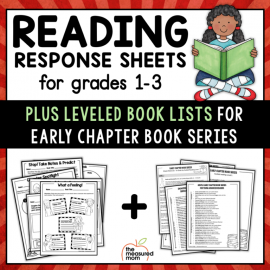
$18.00
Help your readers find chapter books they’ll love with these leveled book lists. Then use the 75 reading response sheets to help them make sense of what they read. The response sheets focus on character, setting, plot, and vocabulary.
BUY NOW
The post What to do when kids don’t like to read appeared first on The Measured Mom.
Anna Geiger's Blog
- Anna Geiger's profile
- 1 follower


